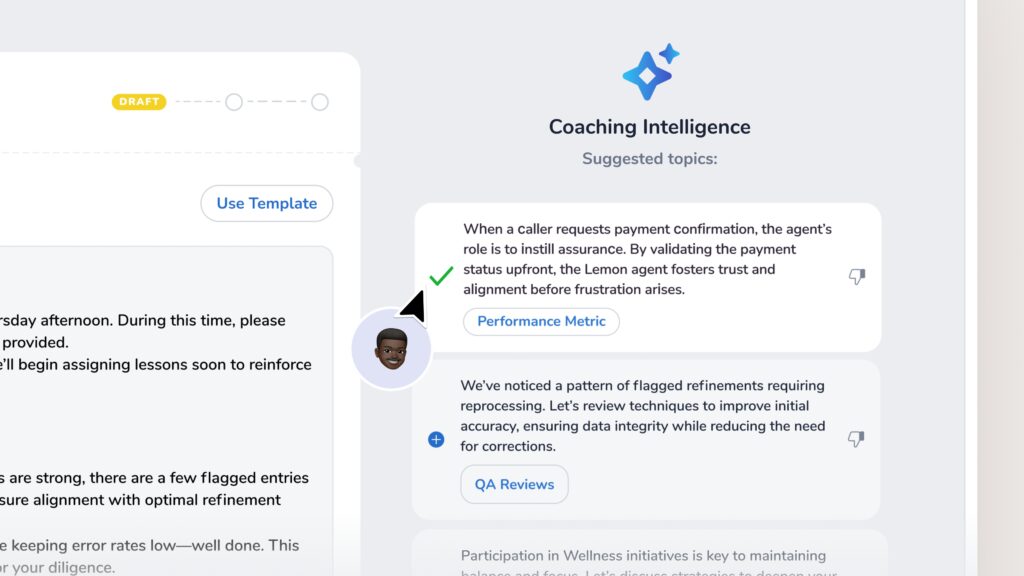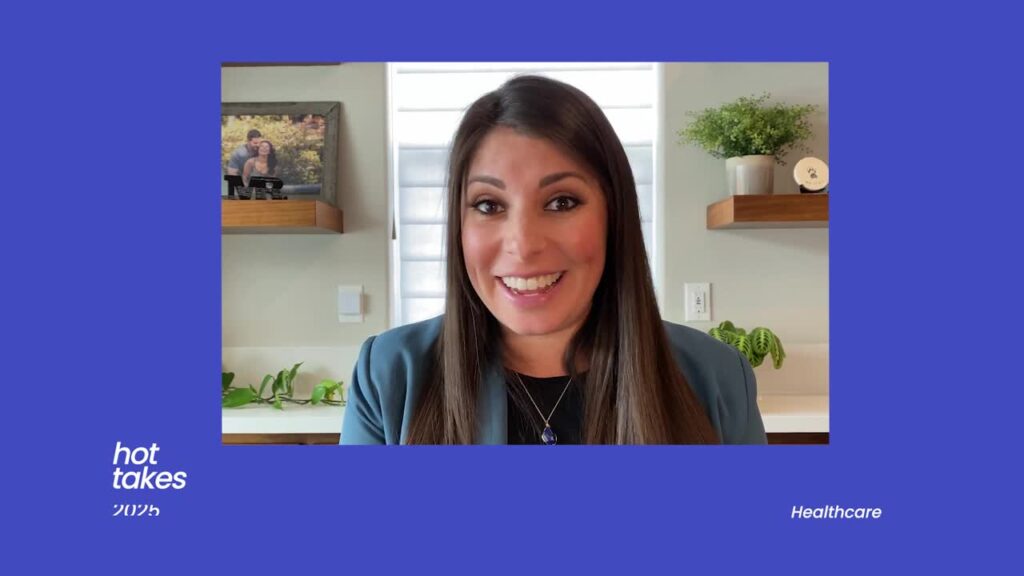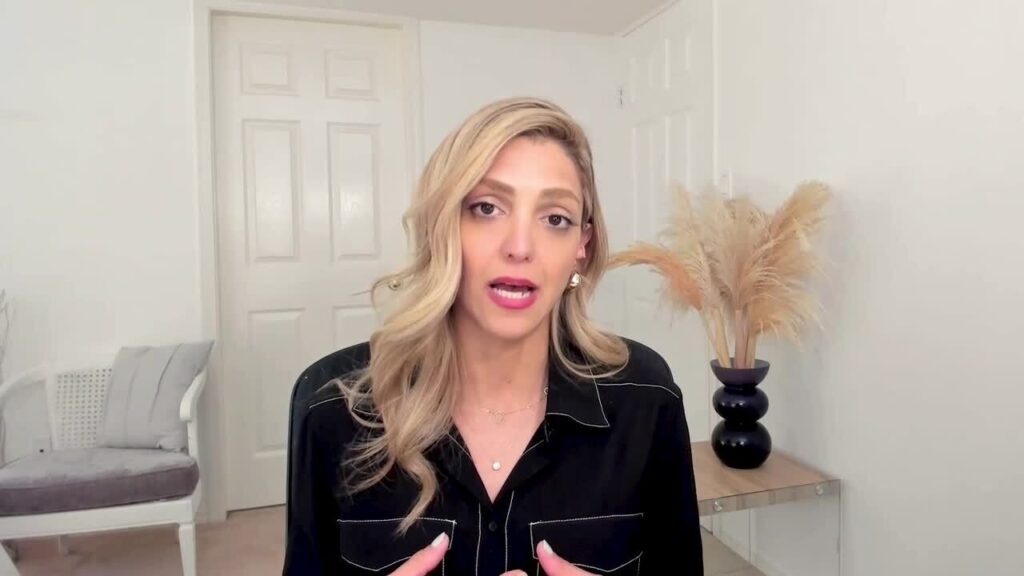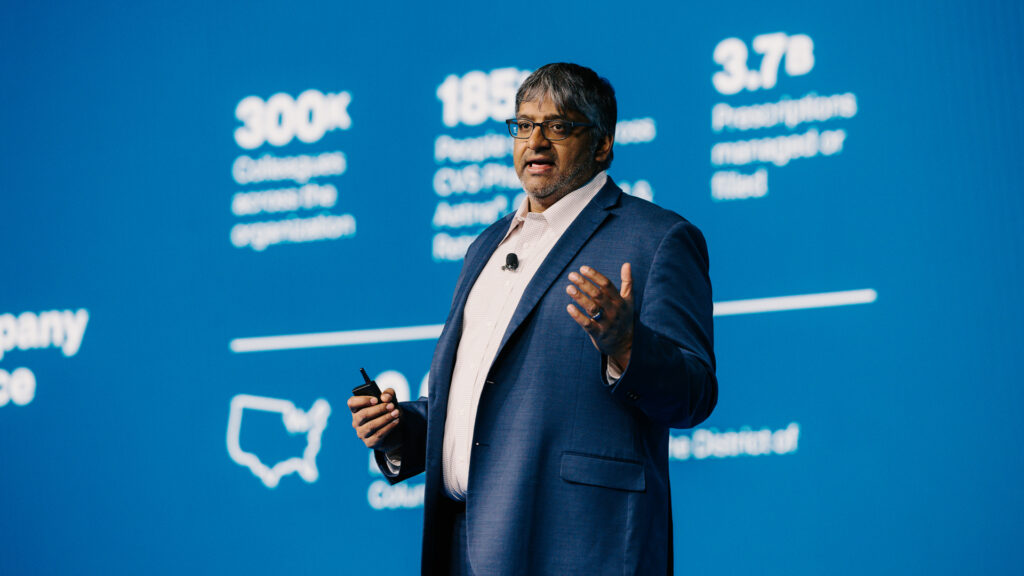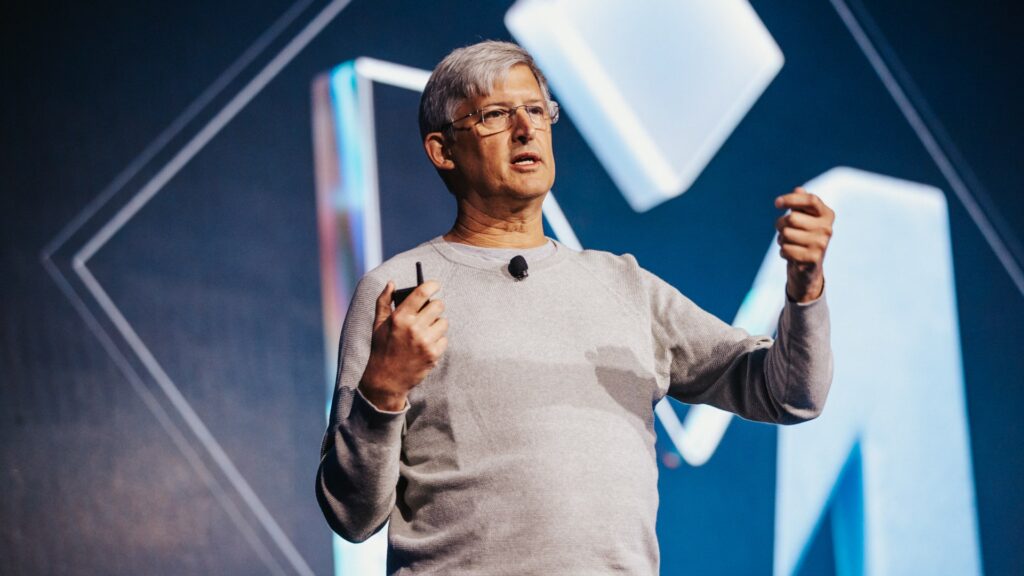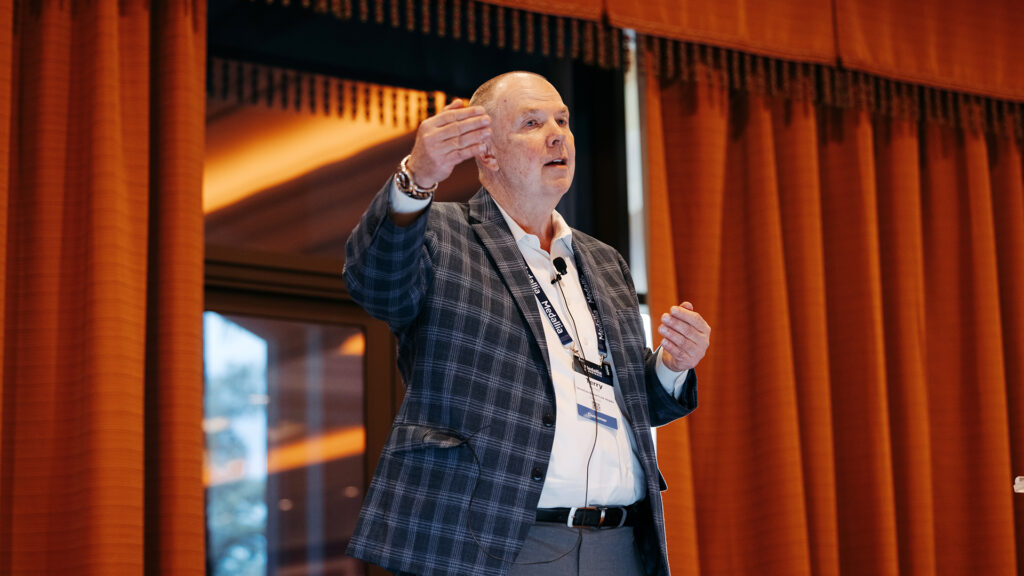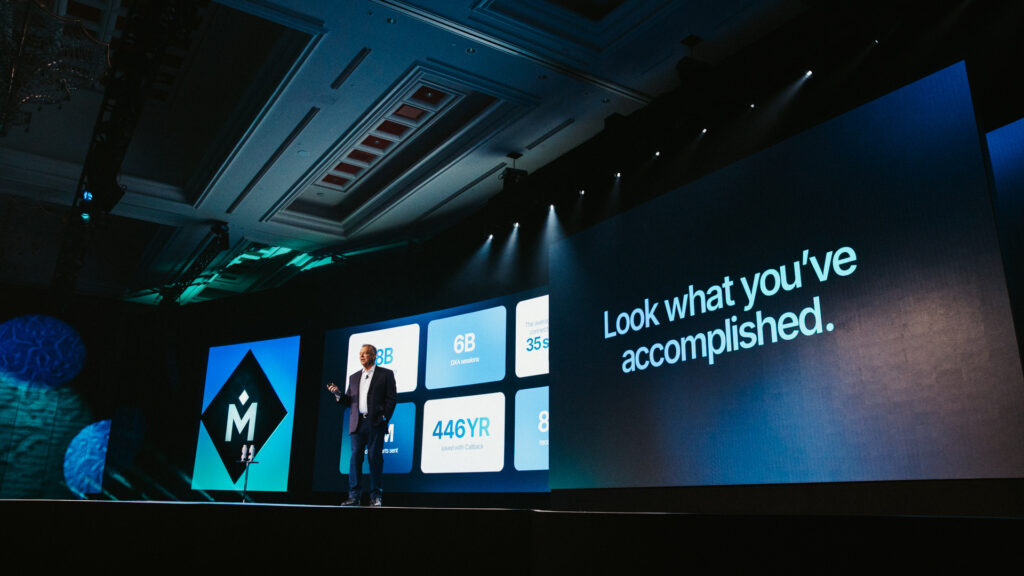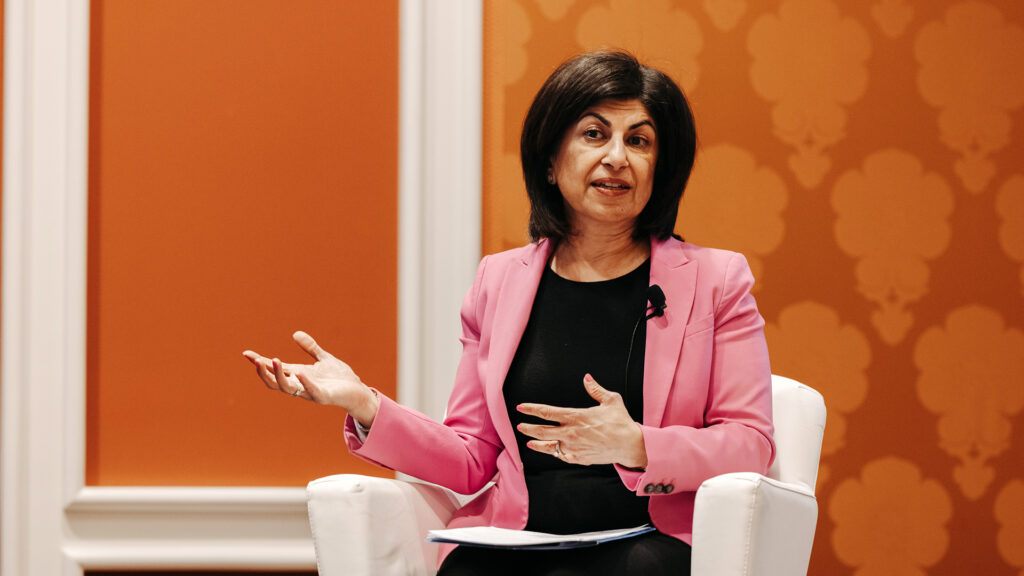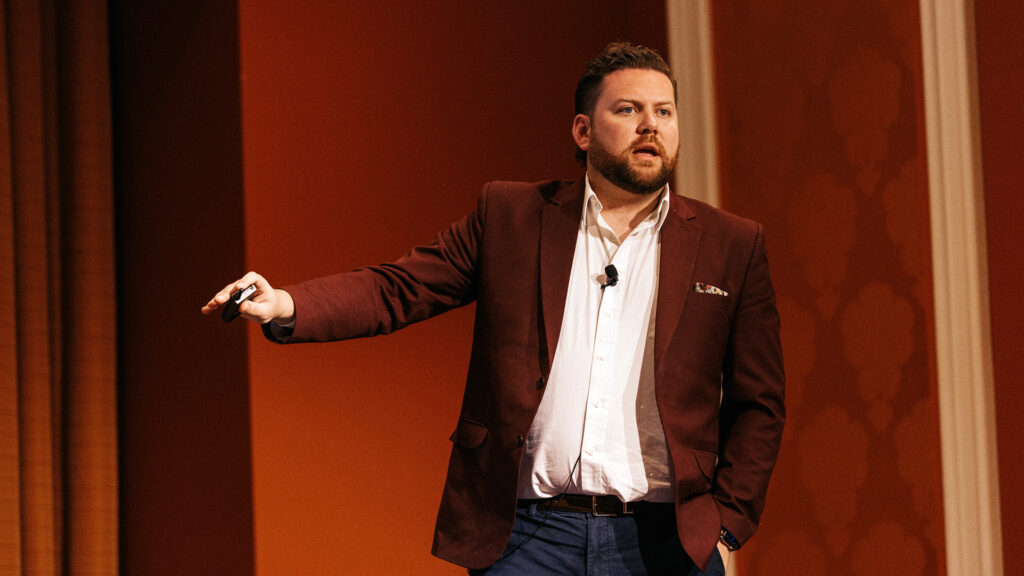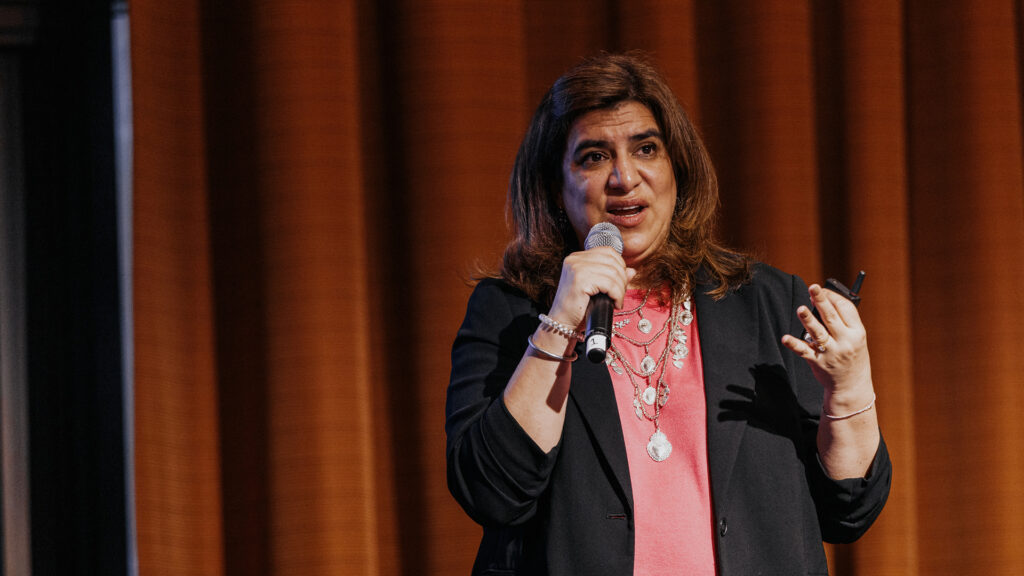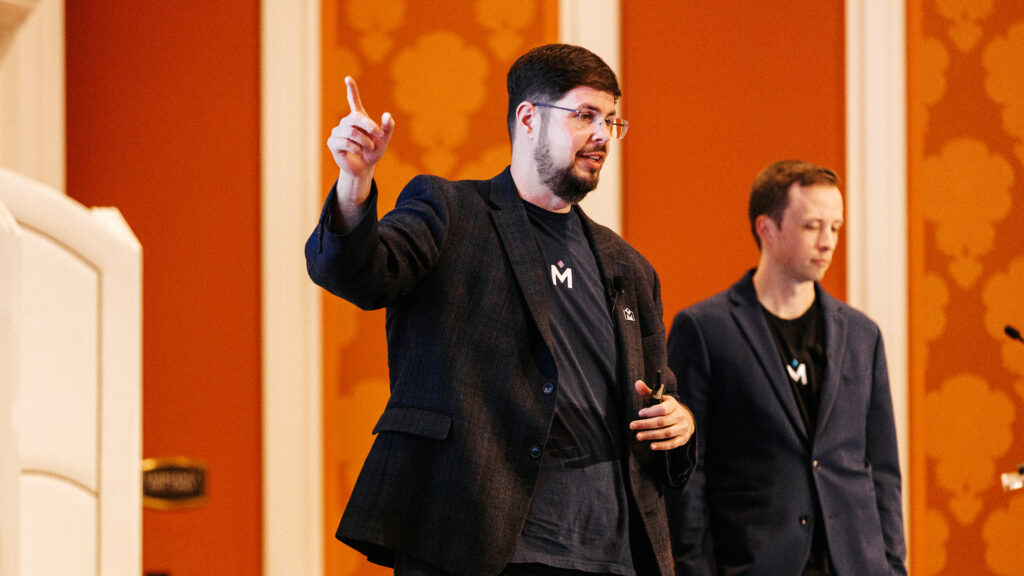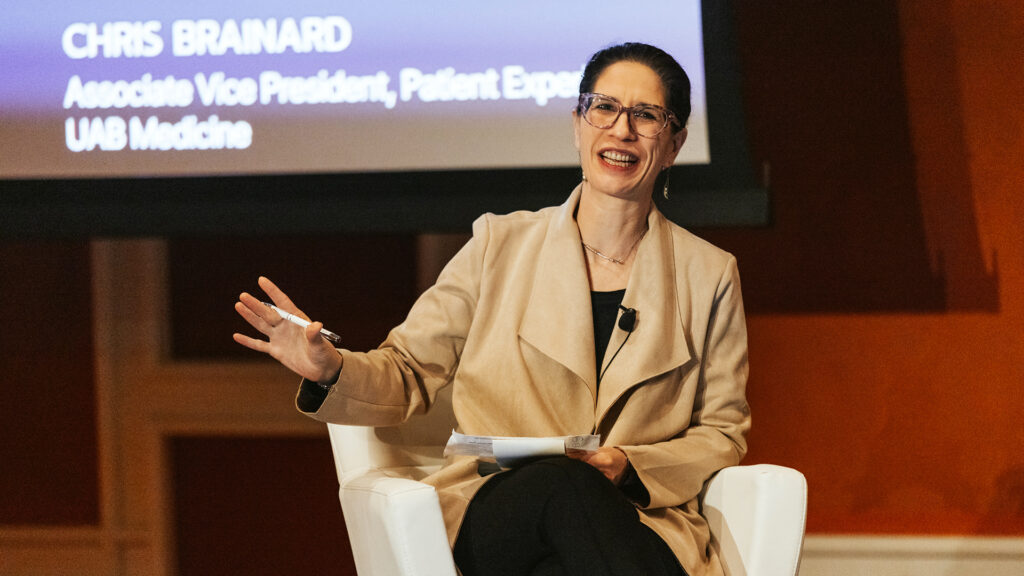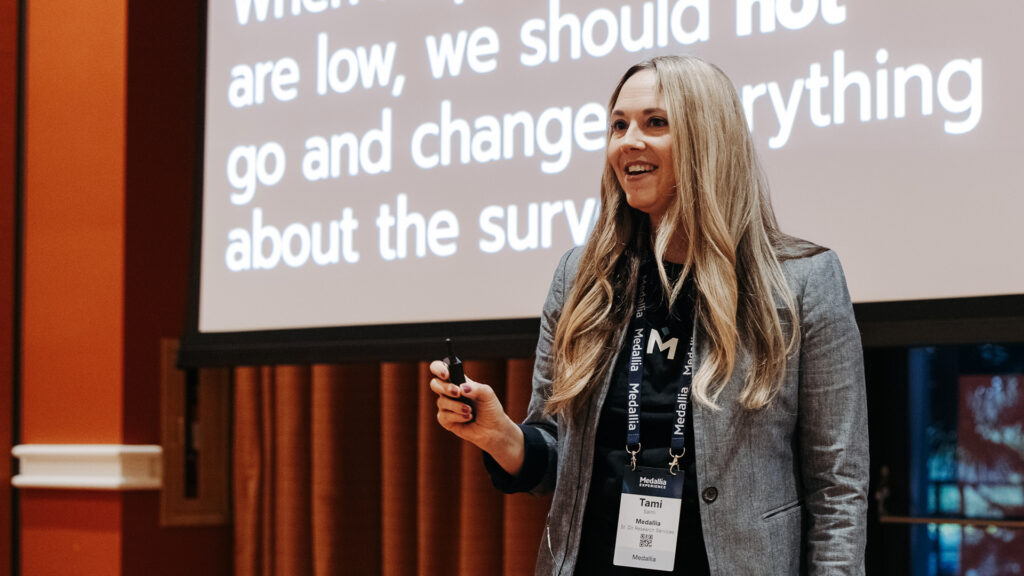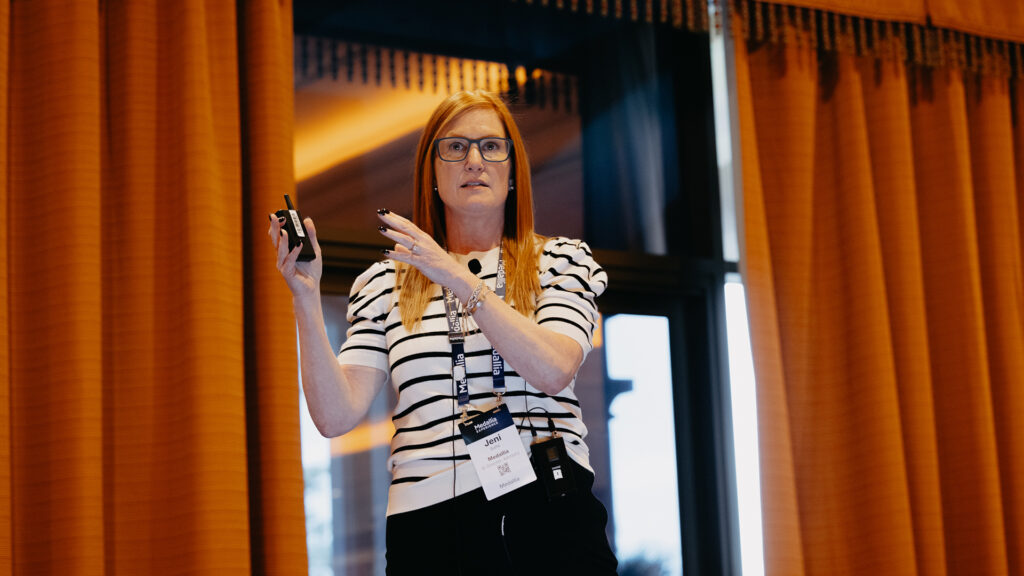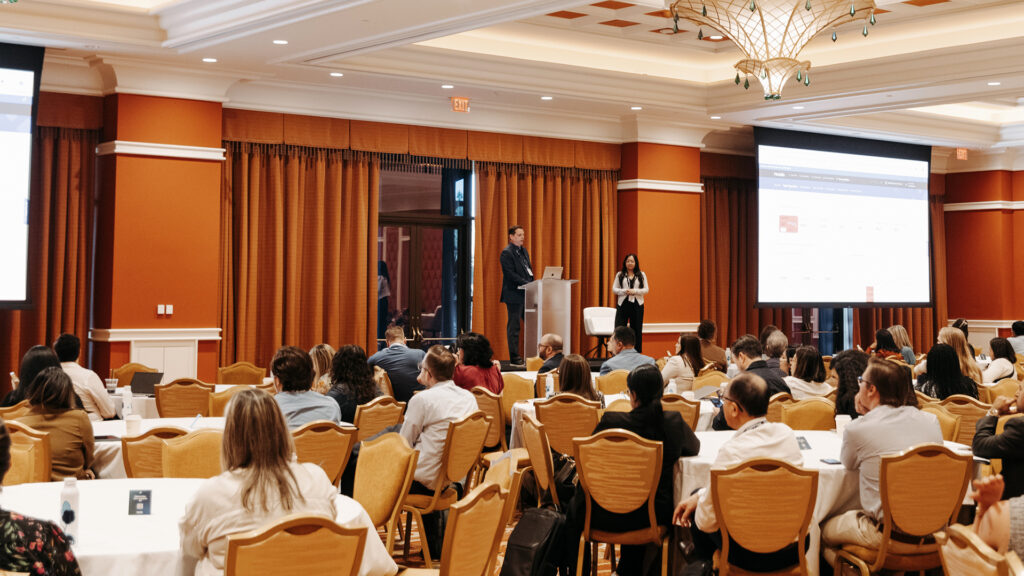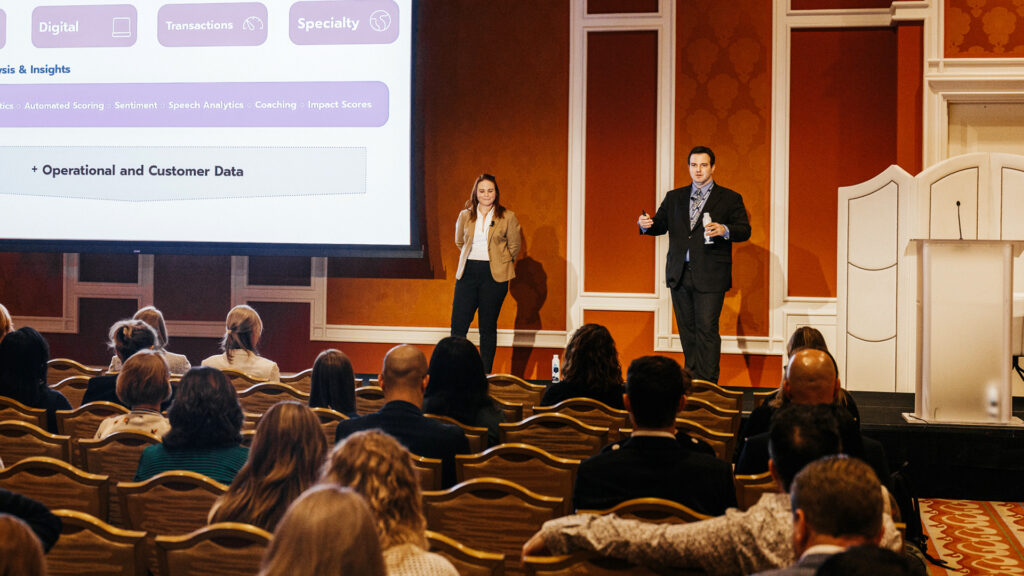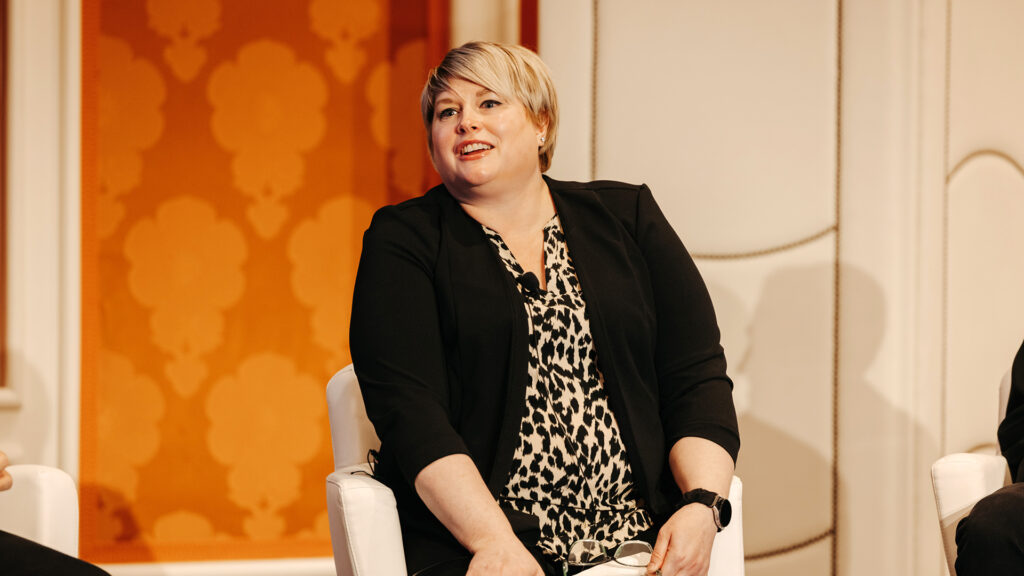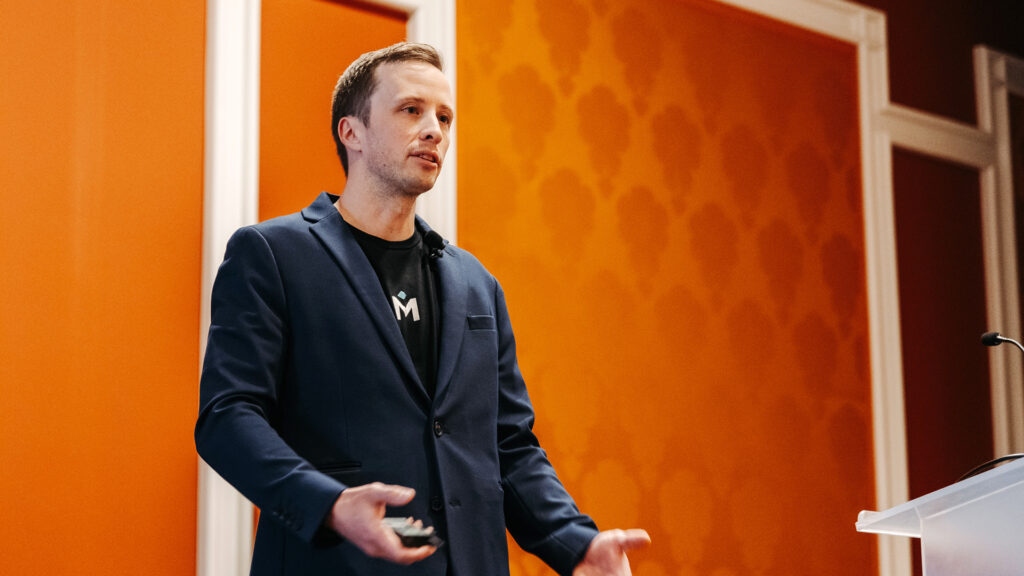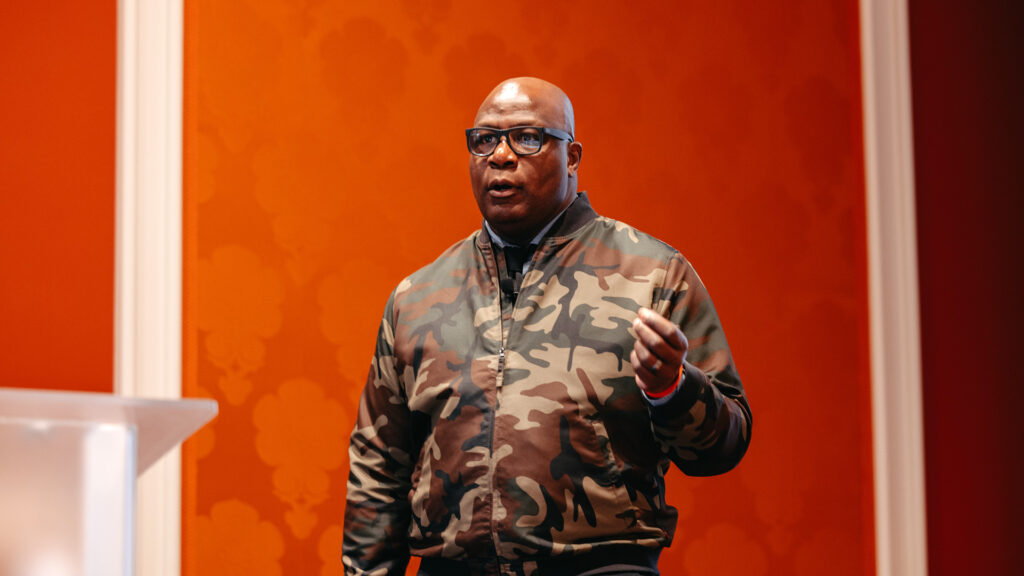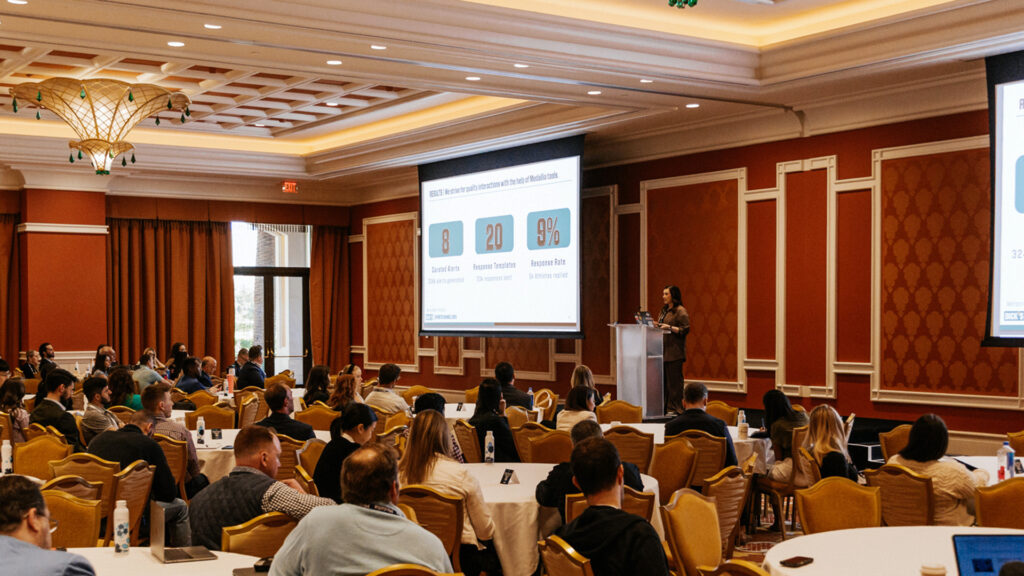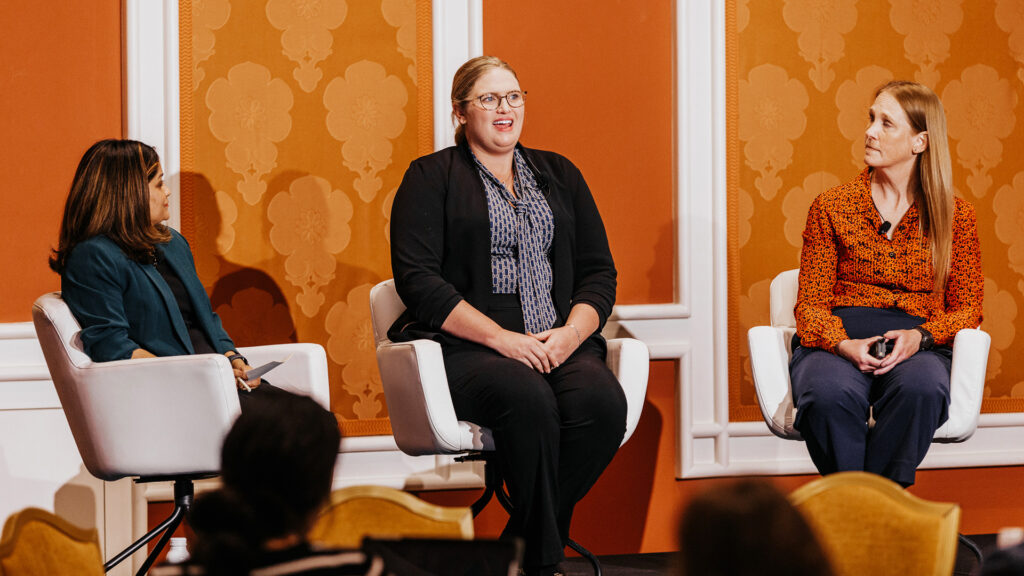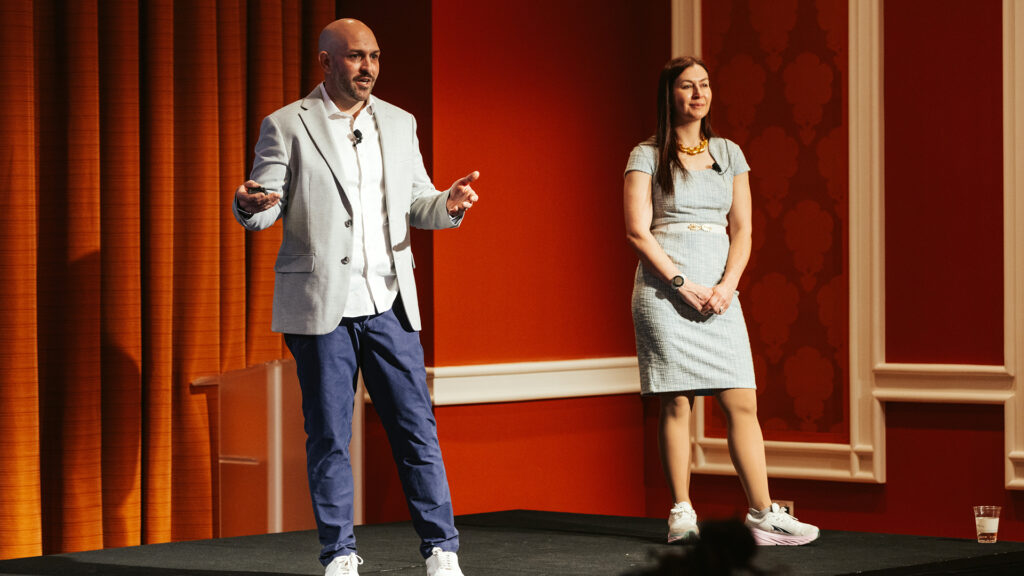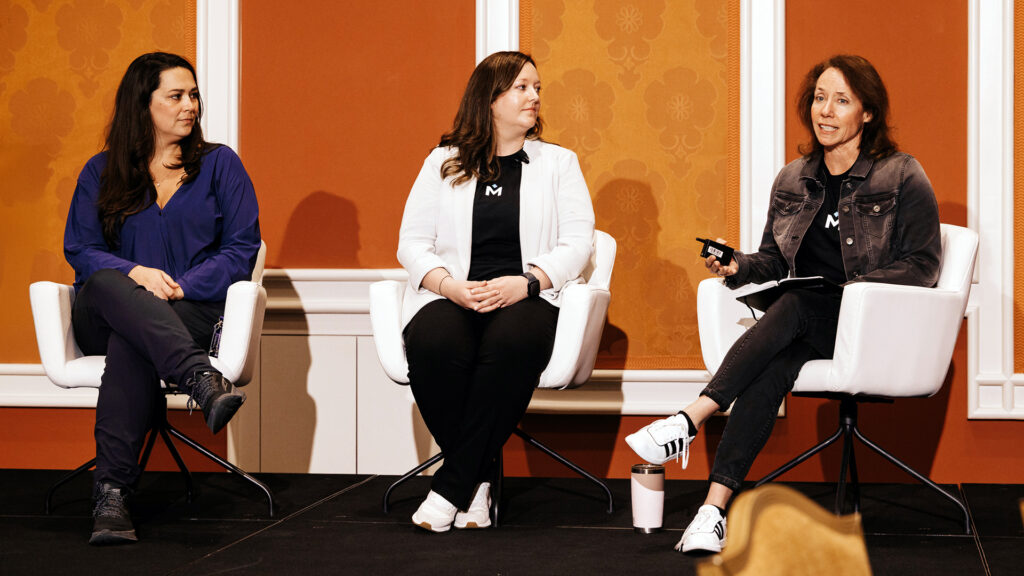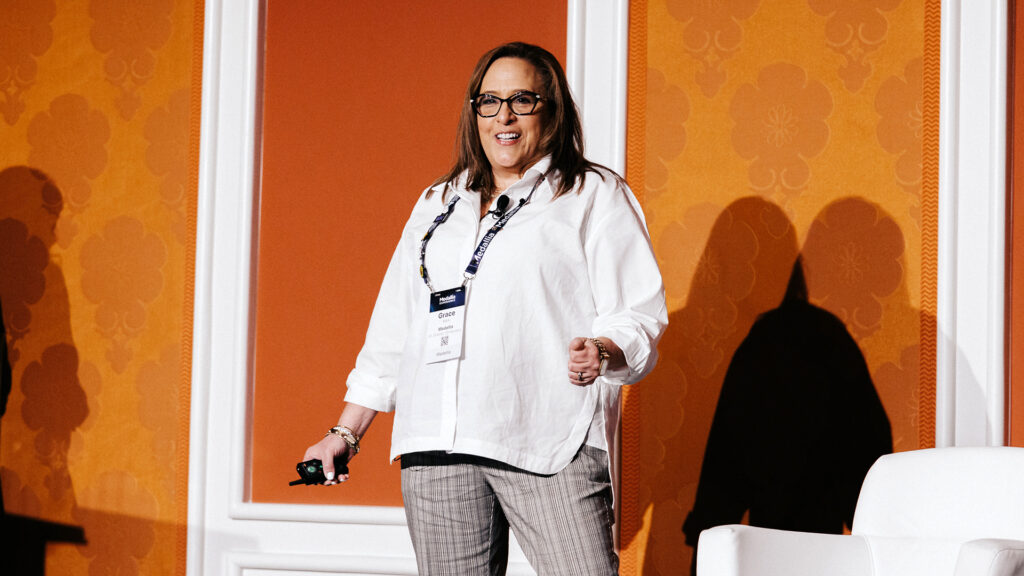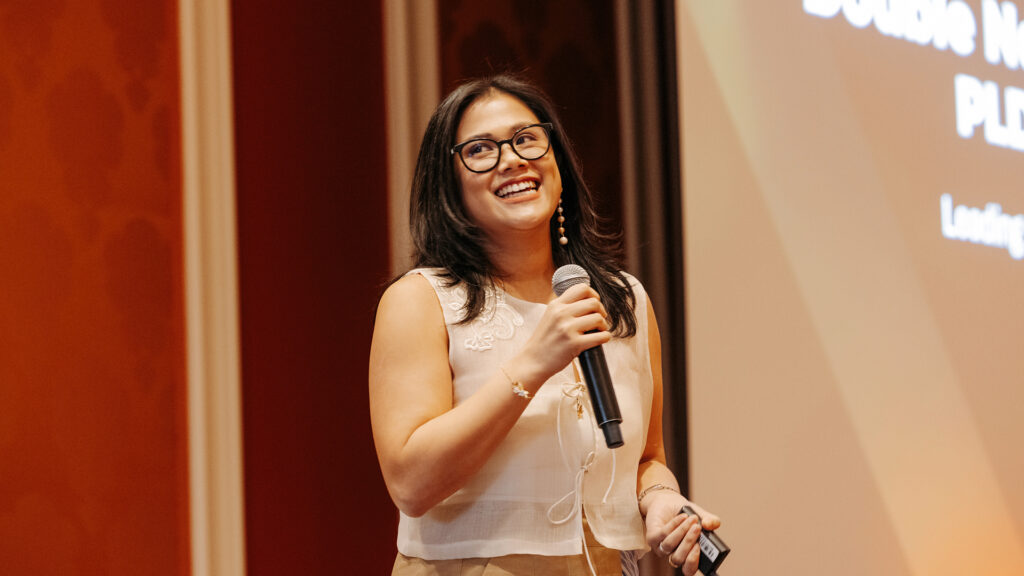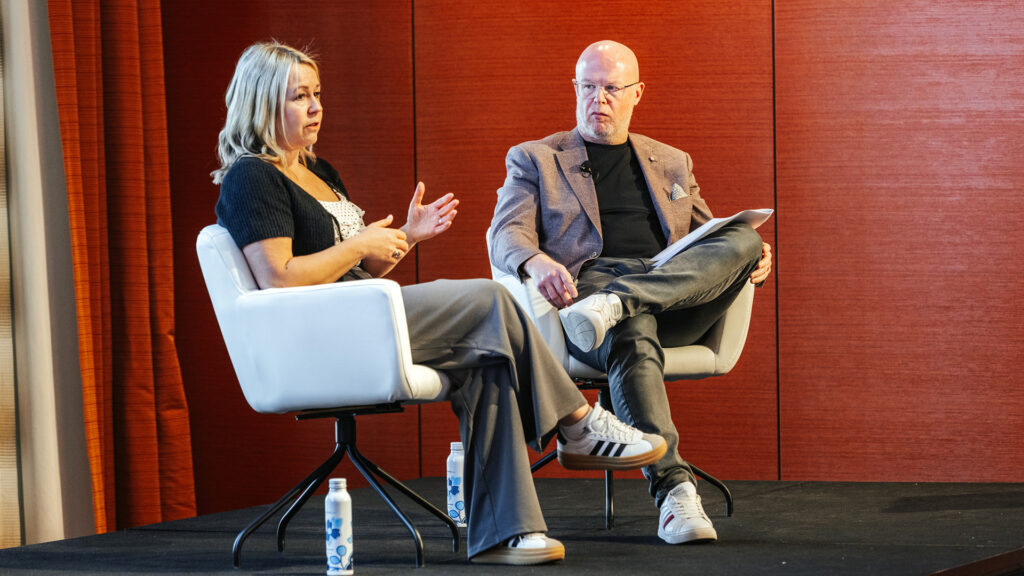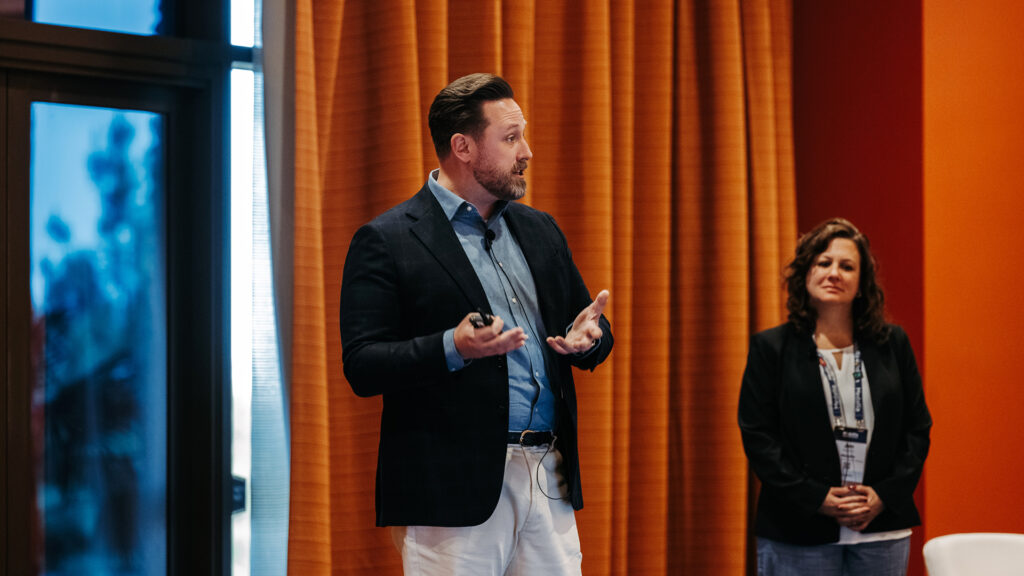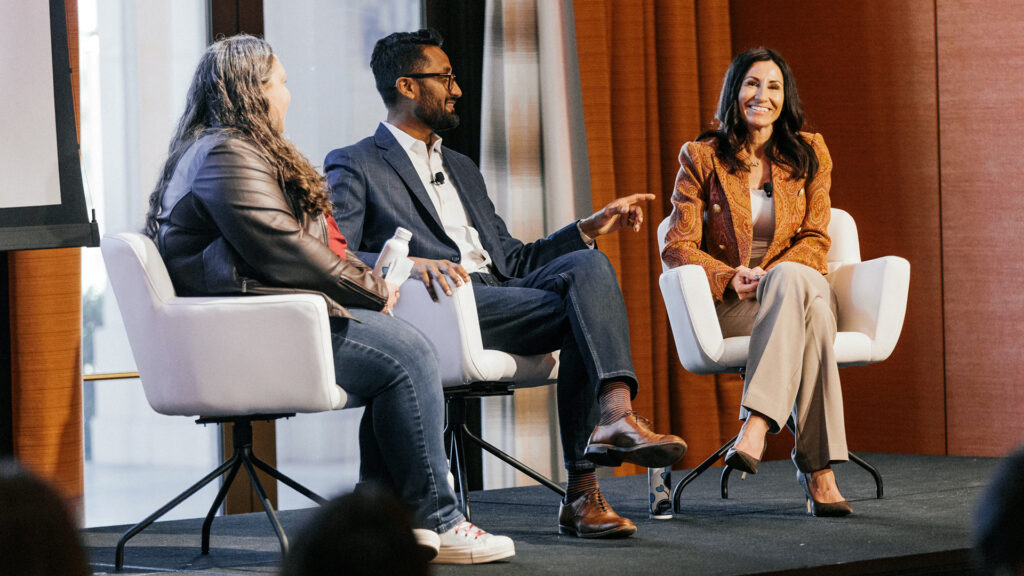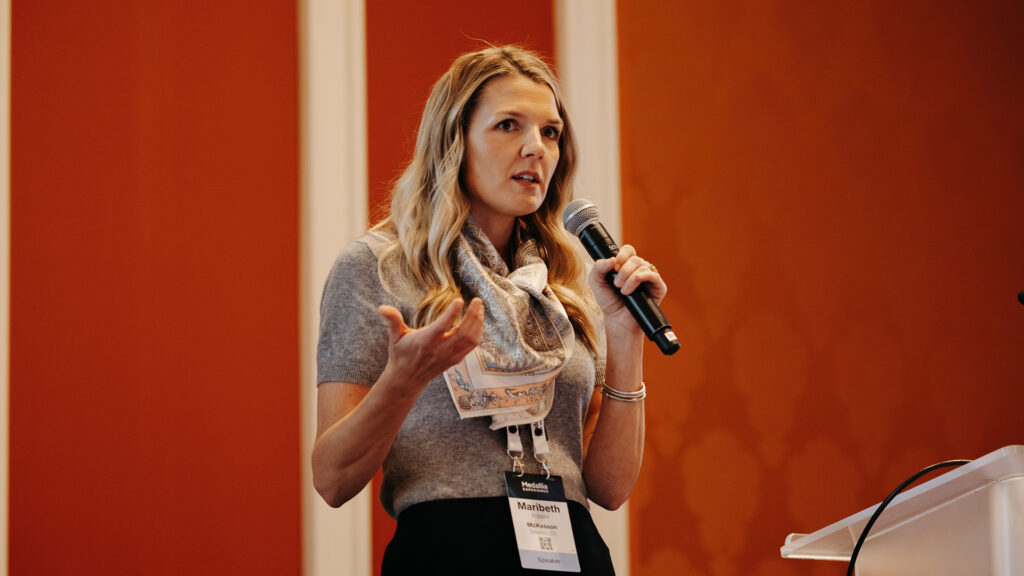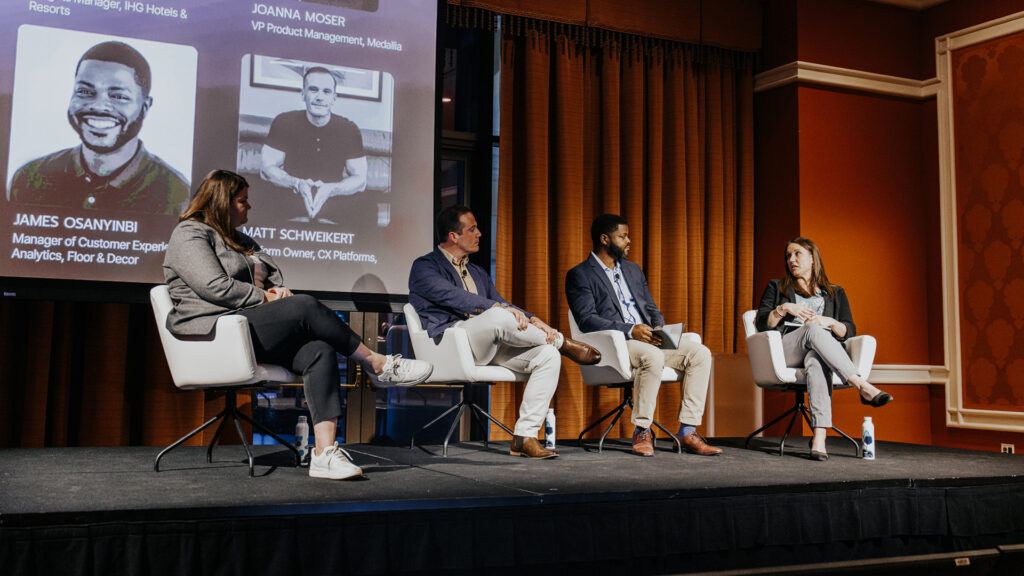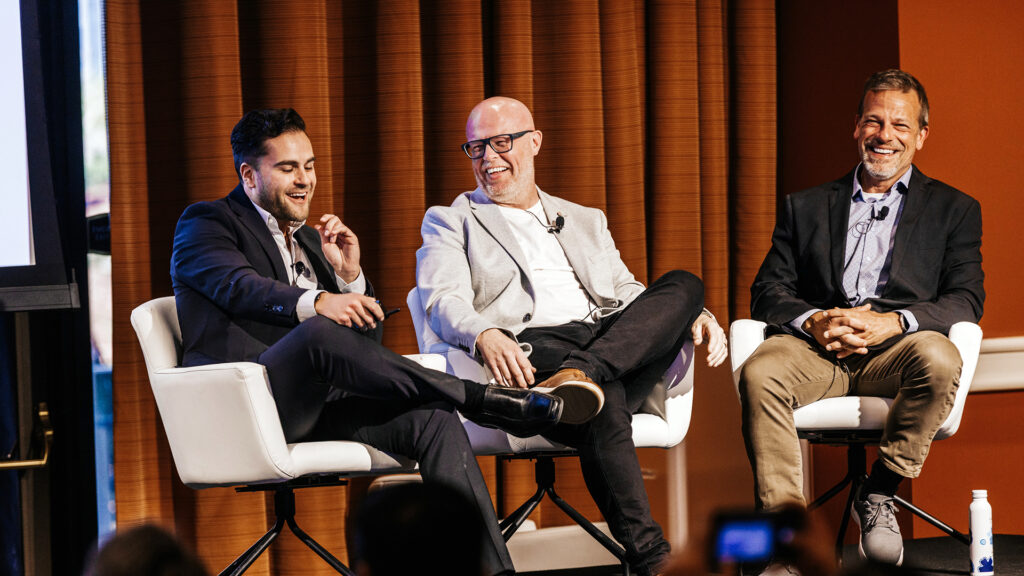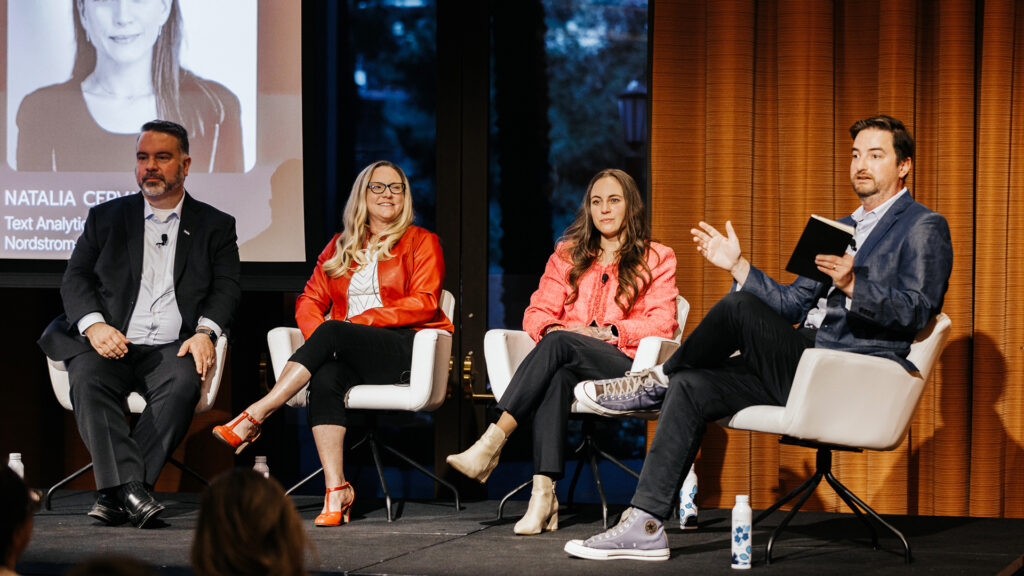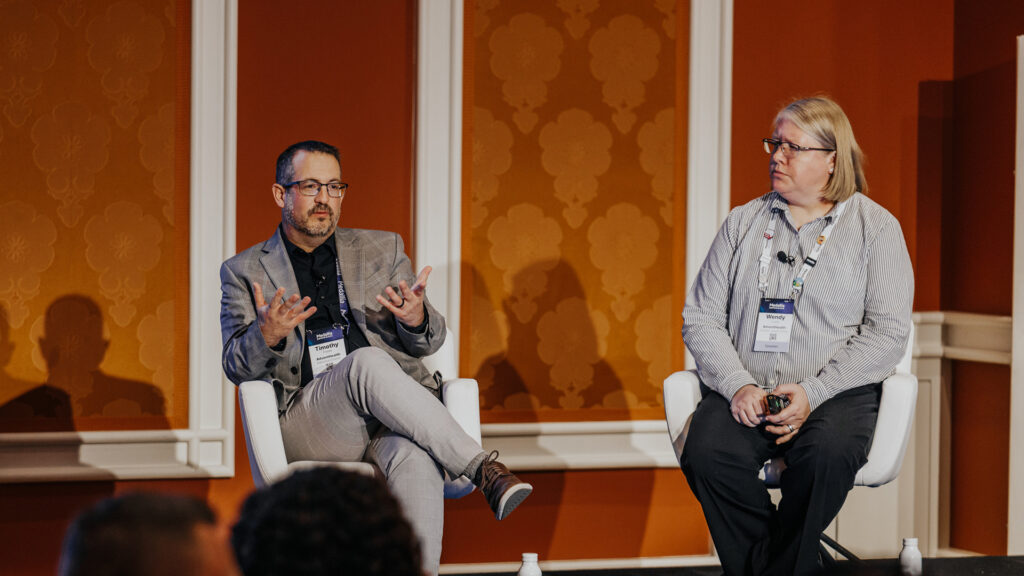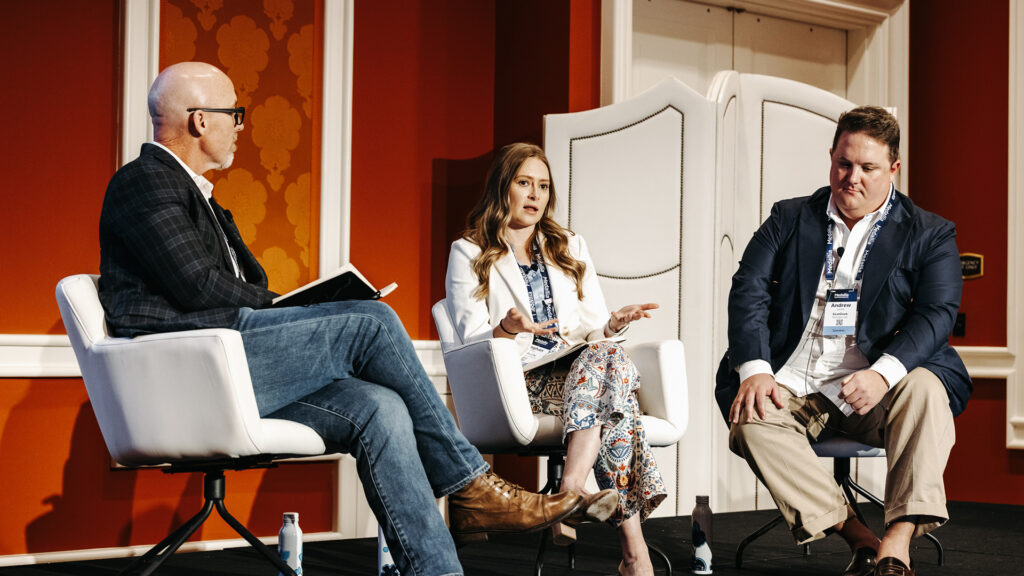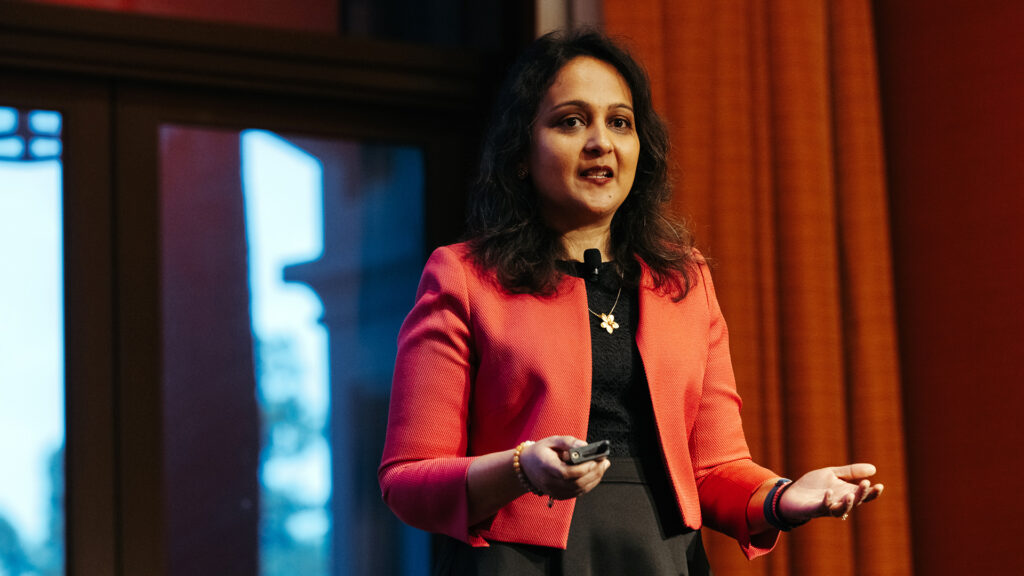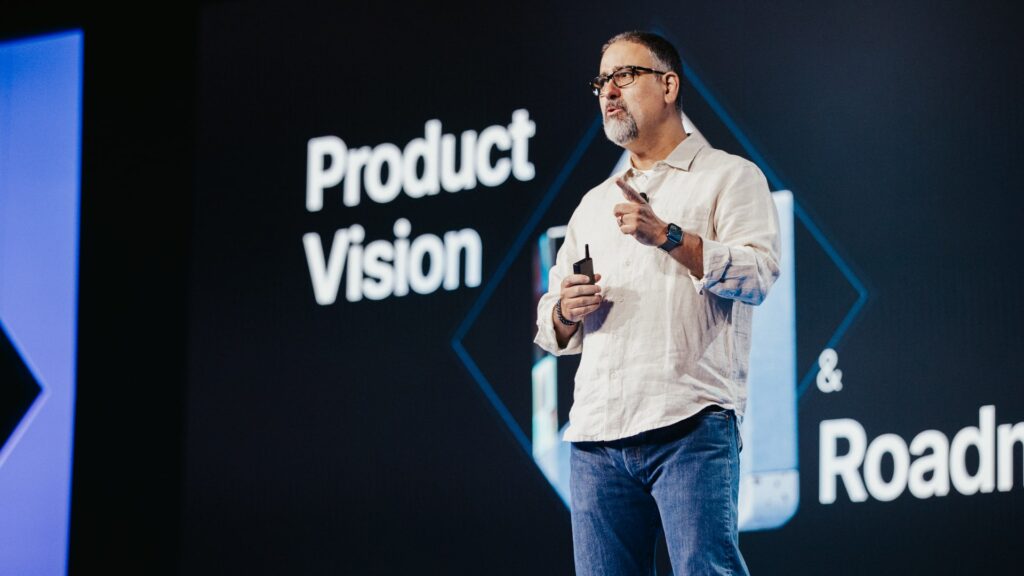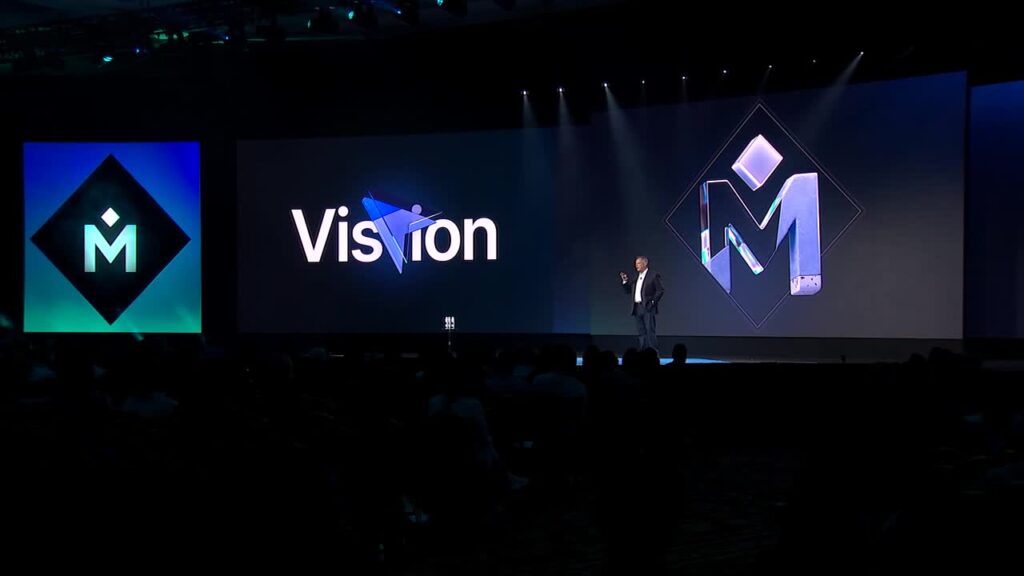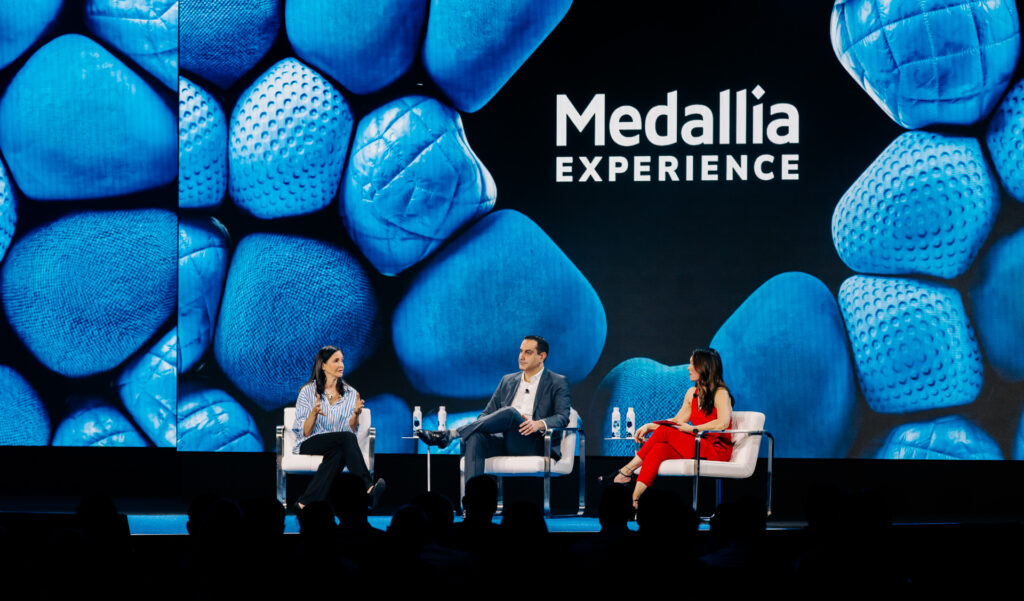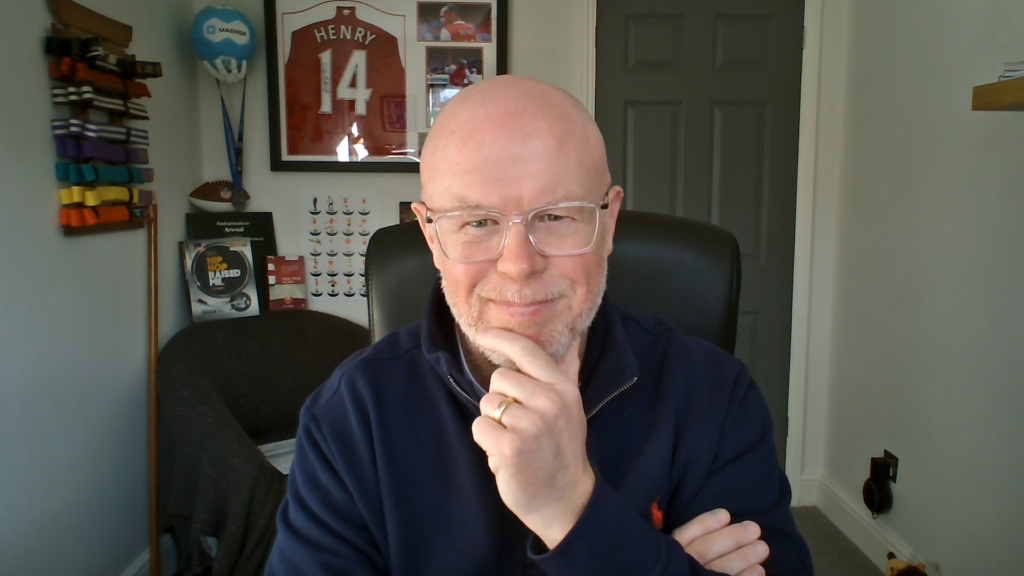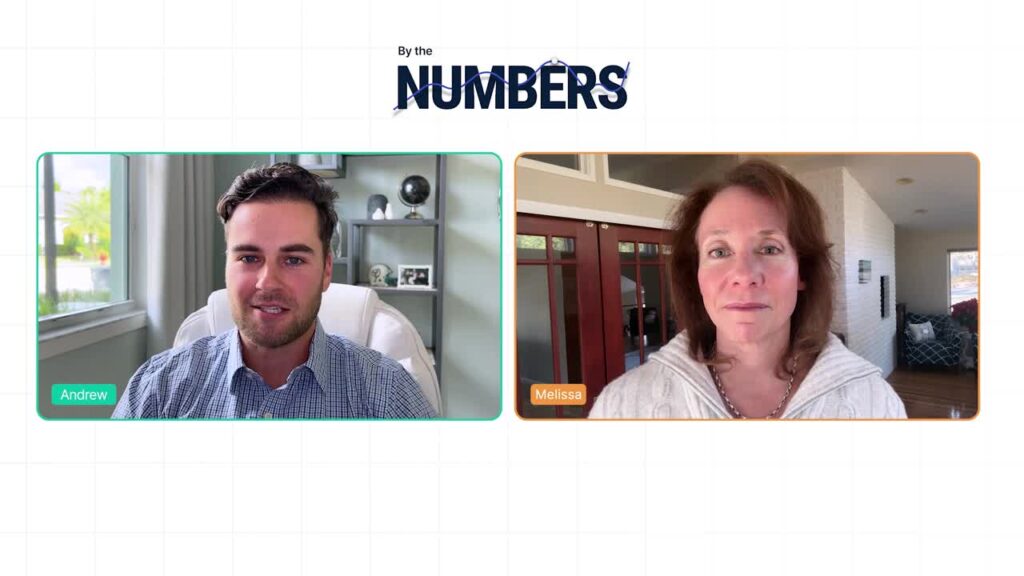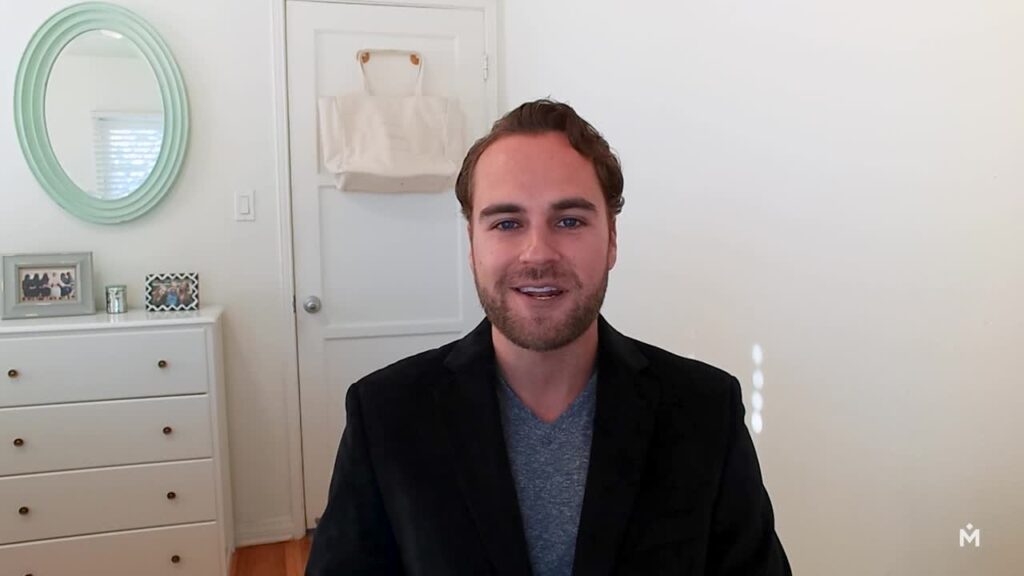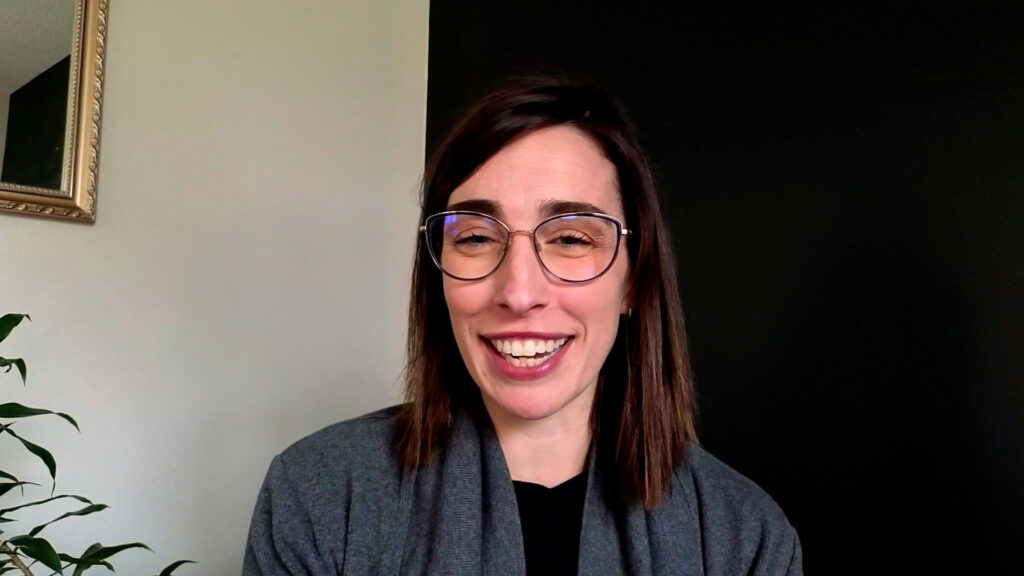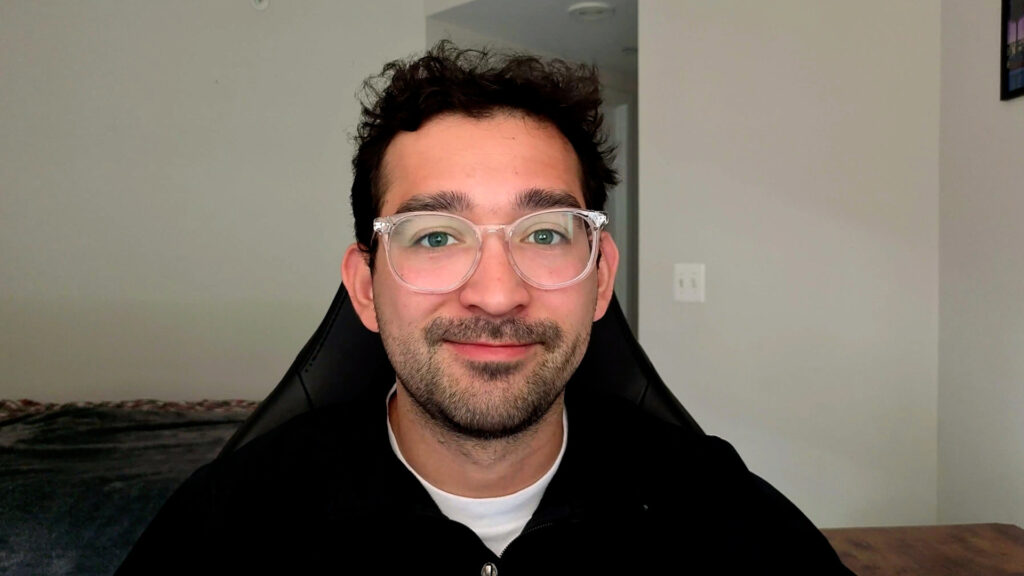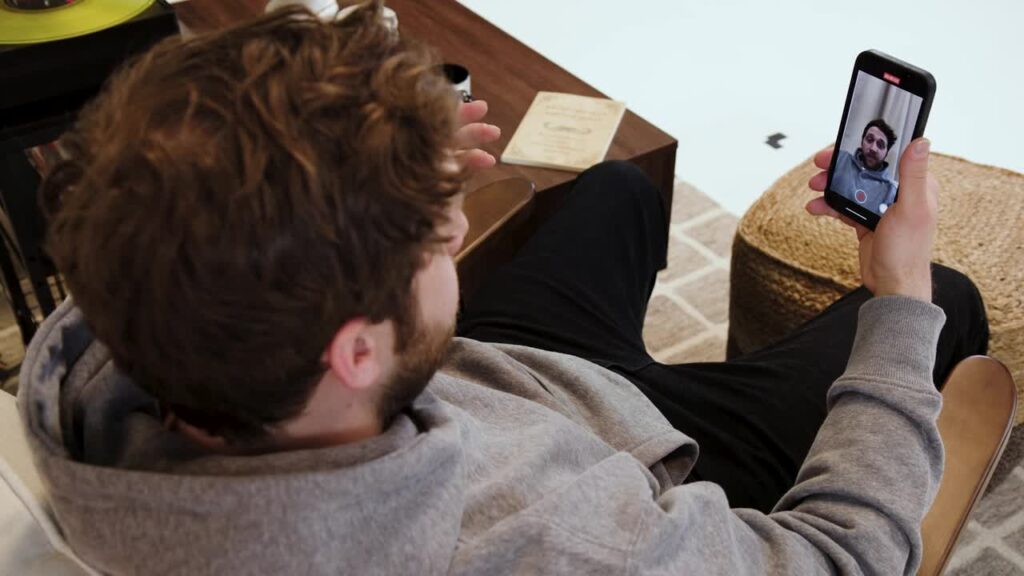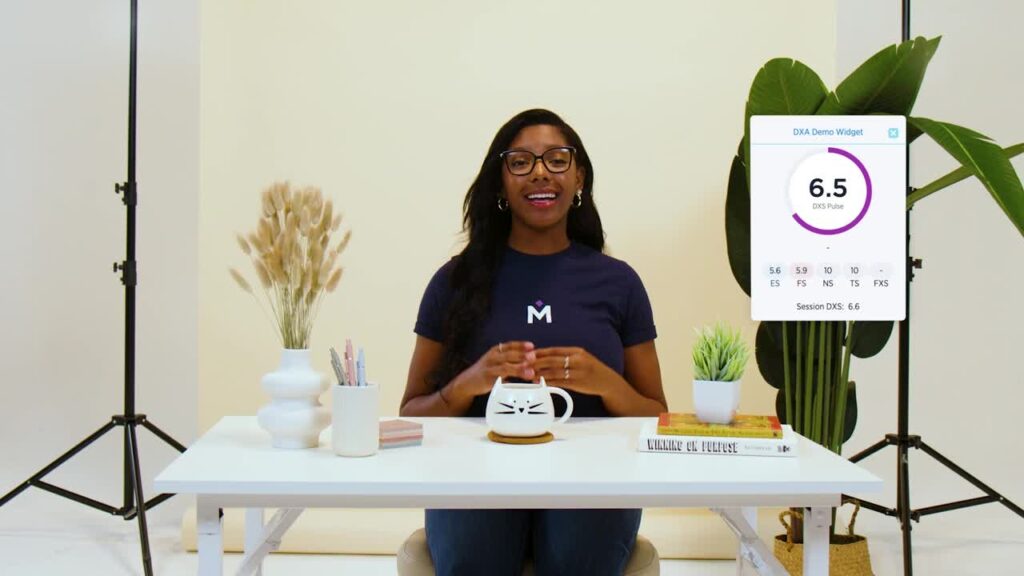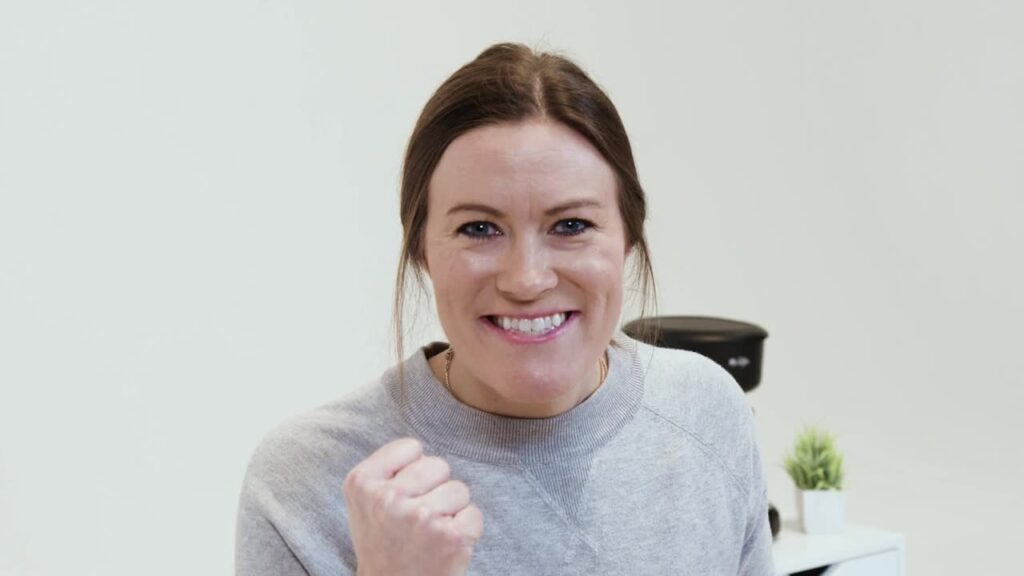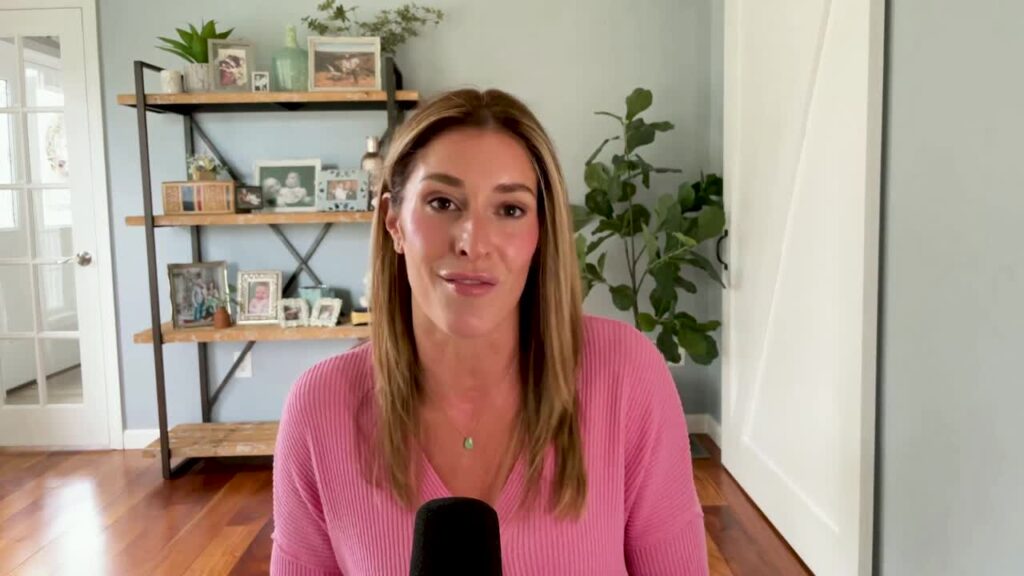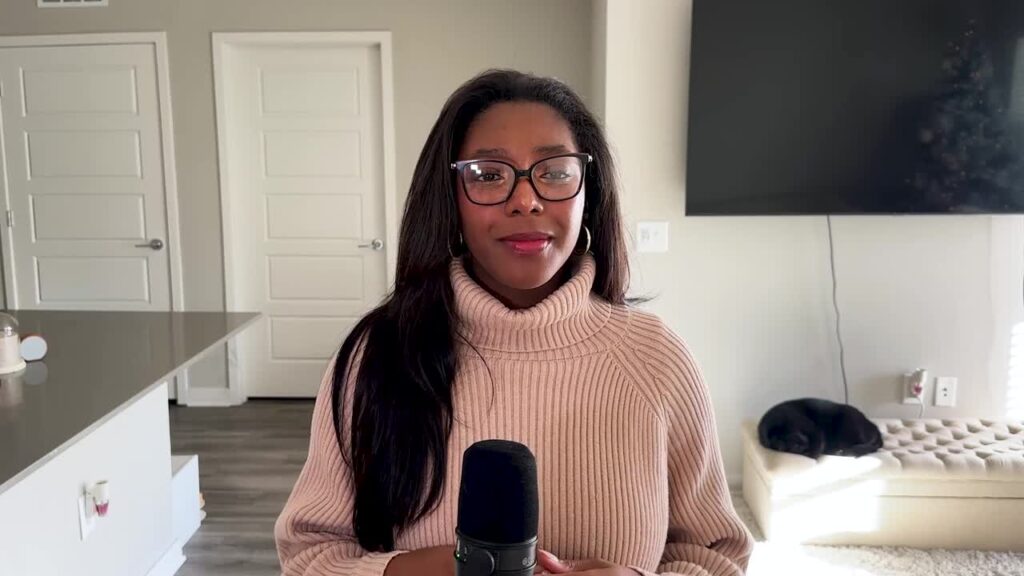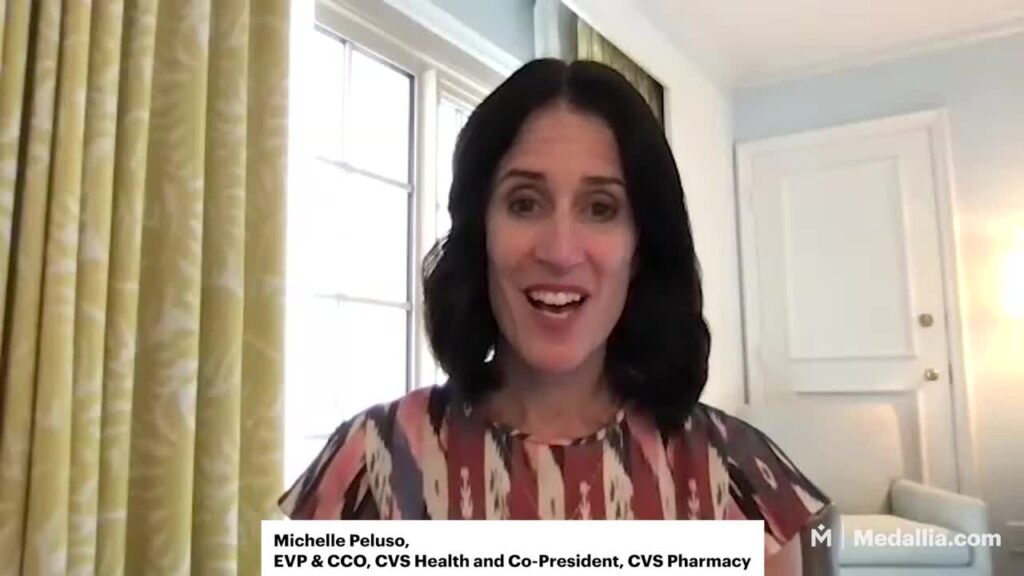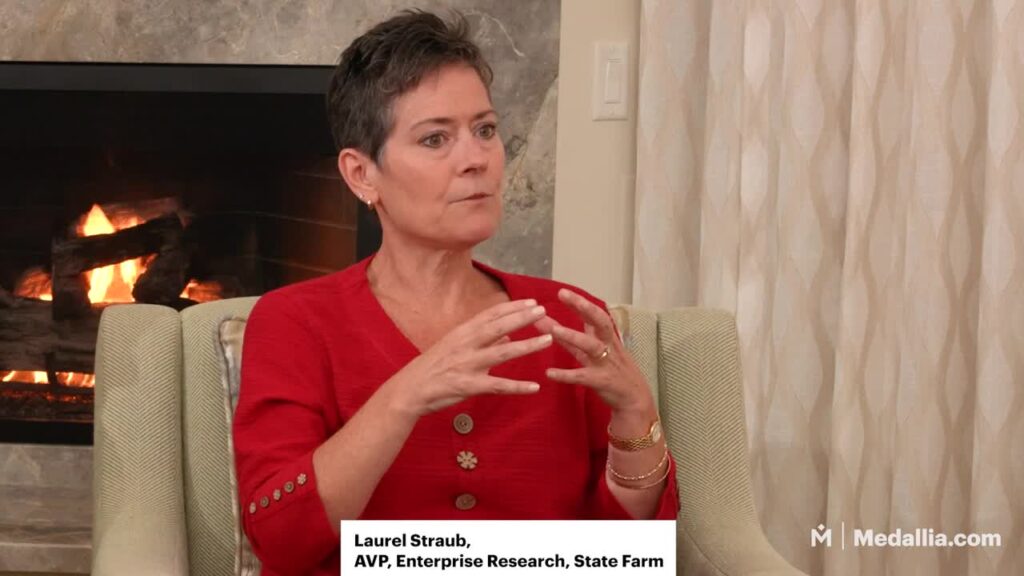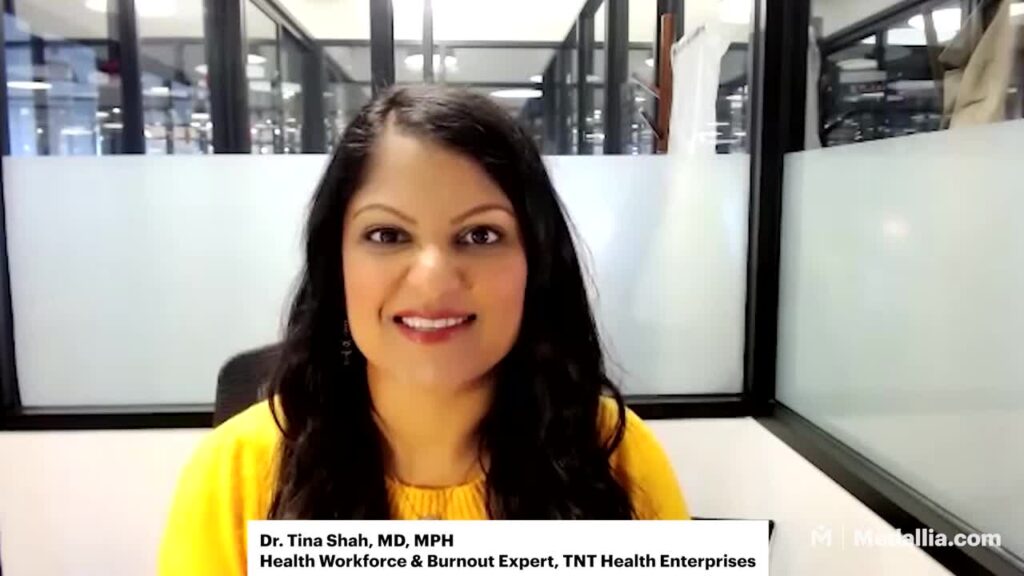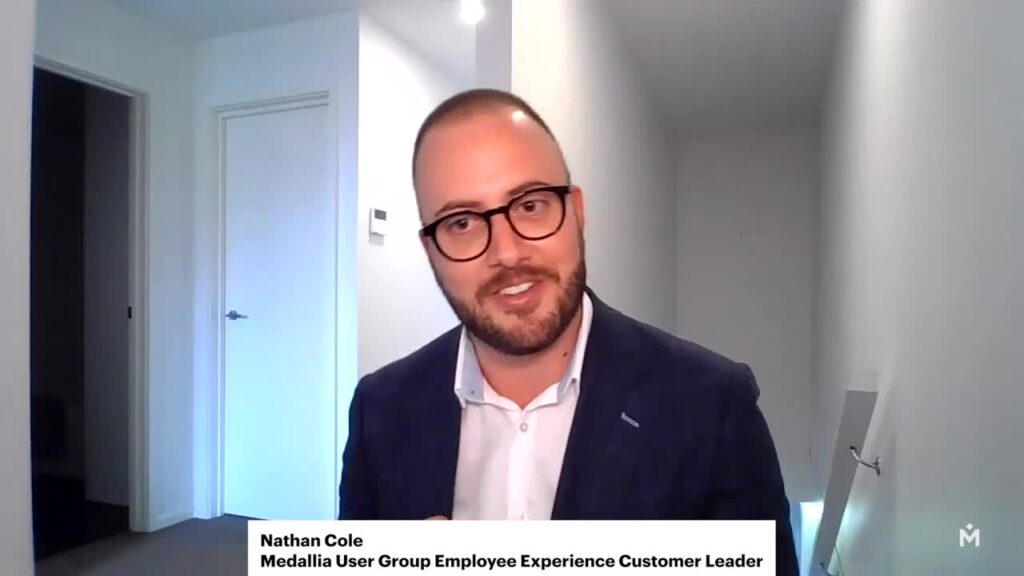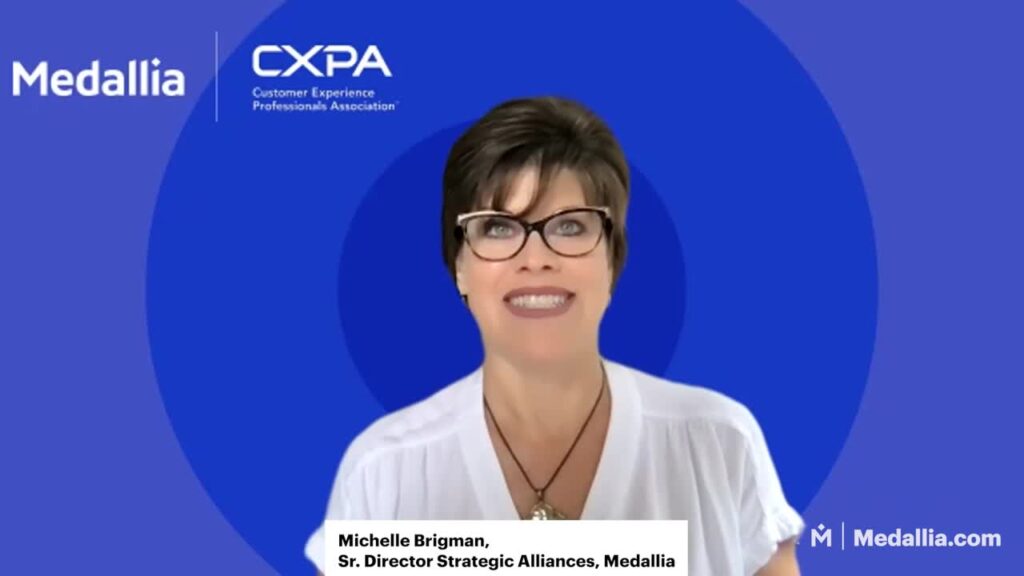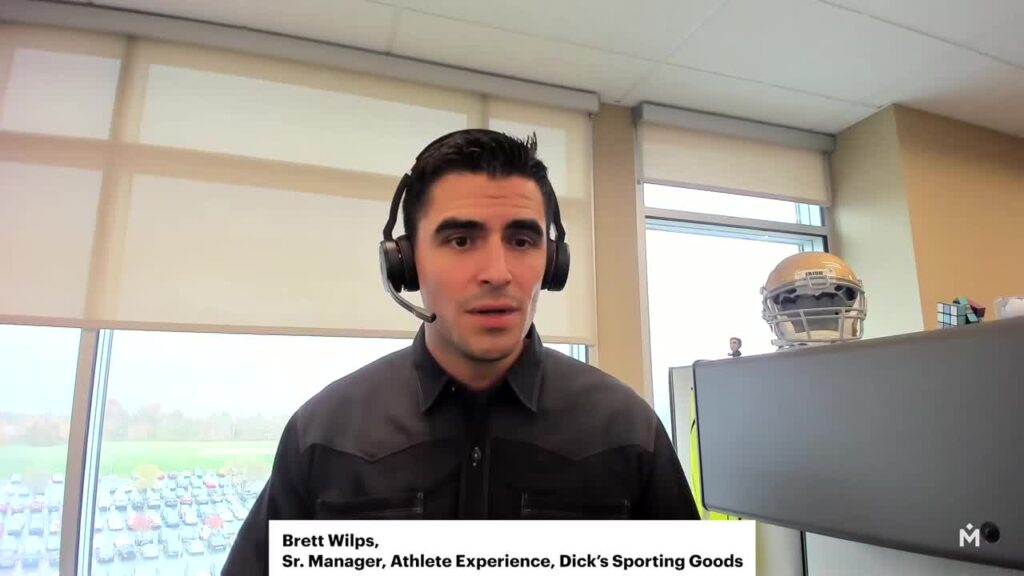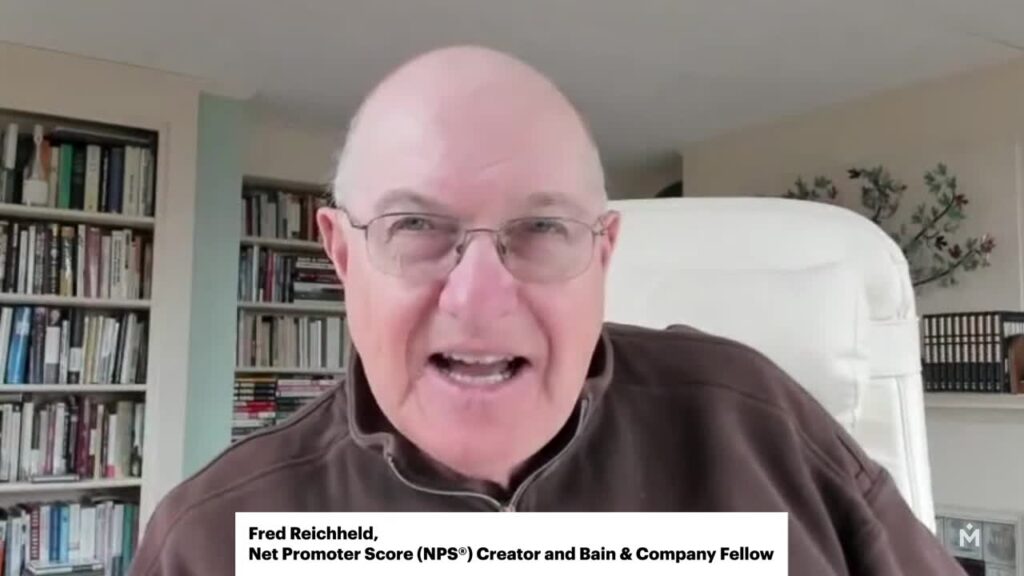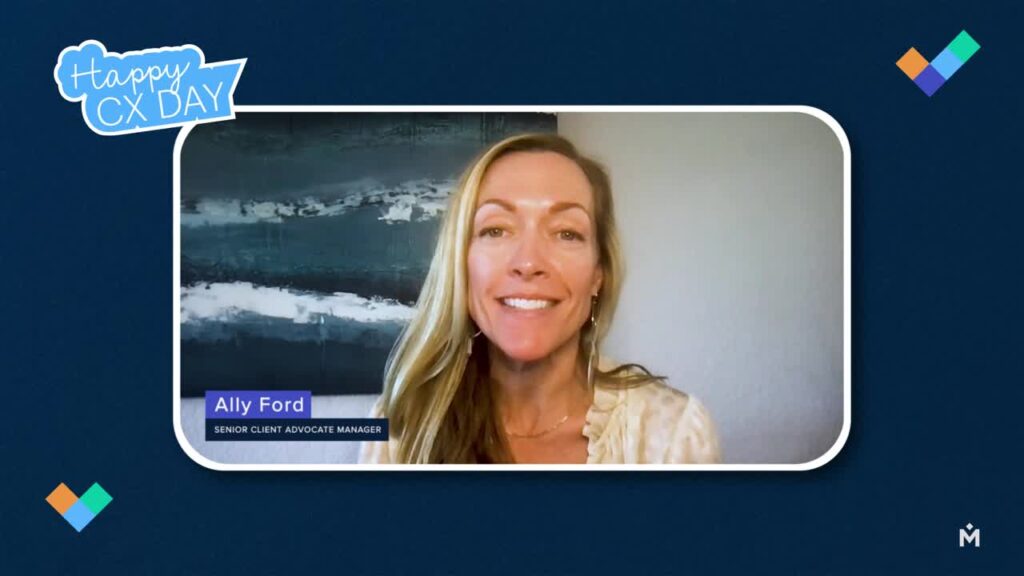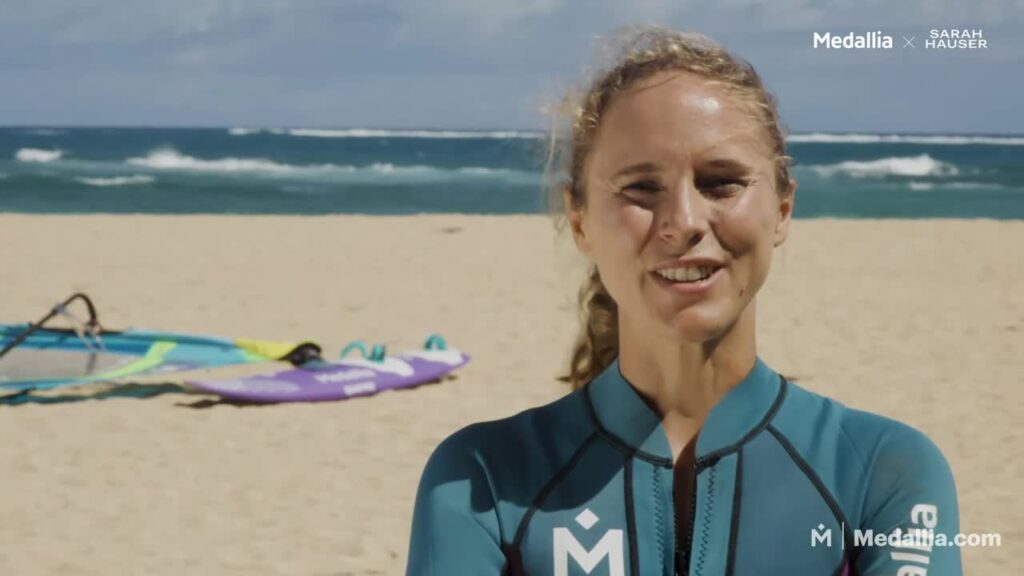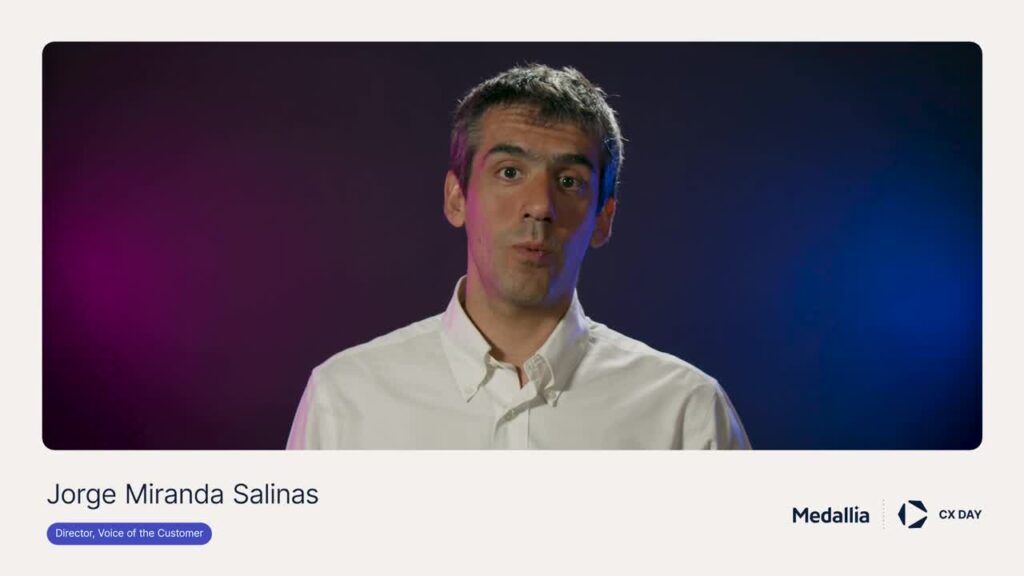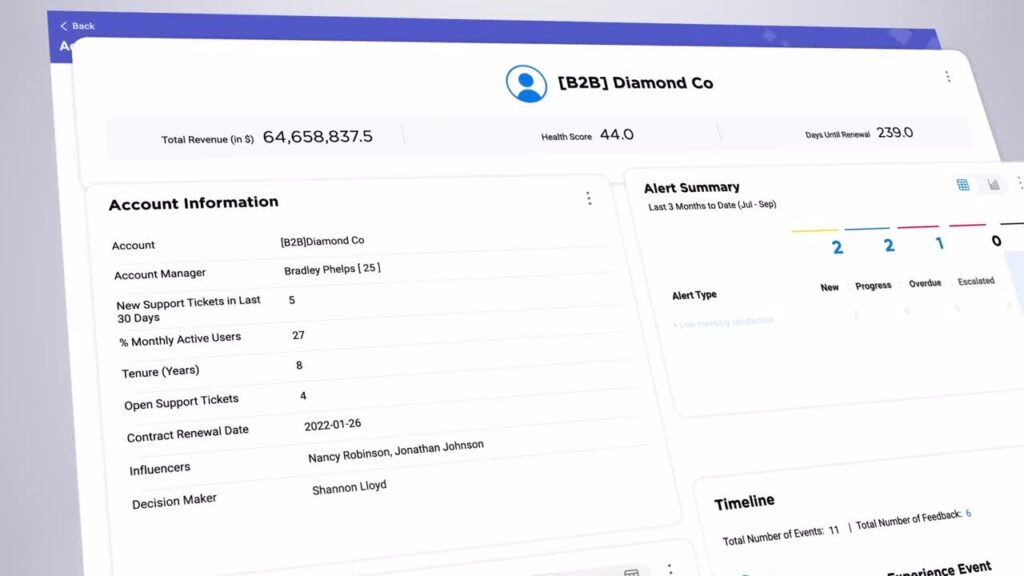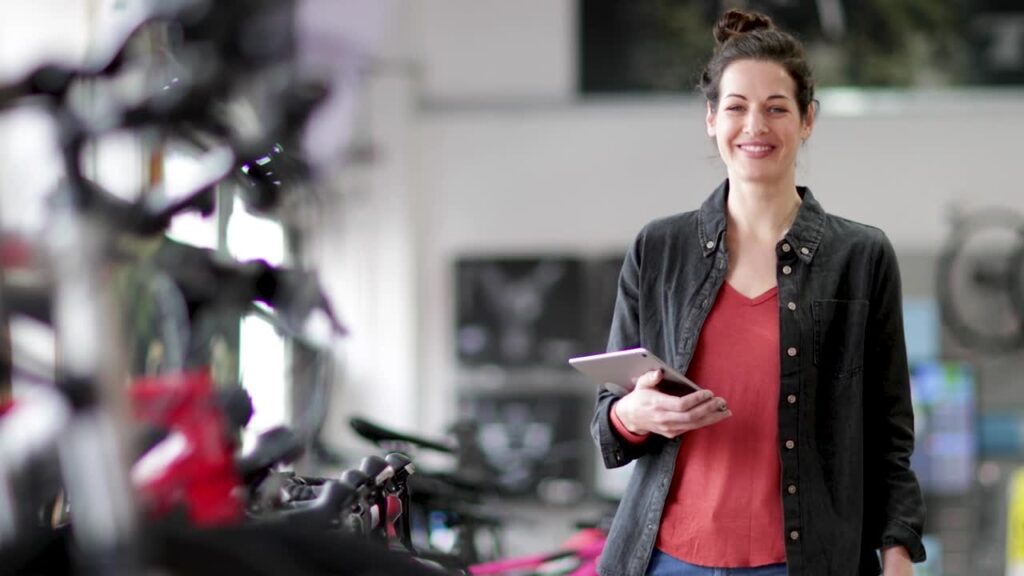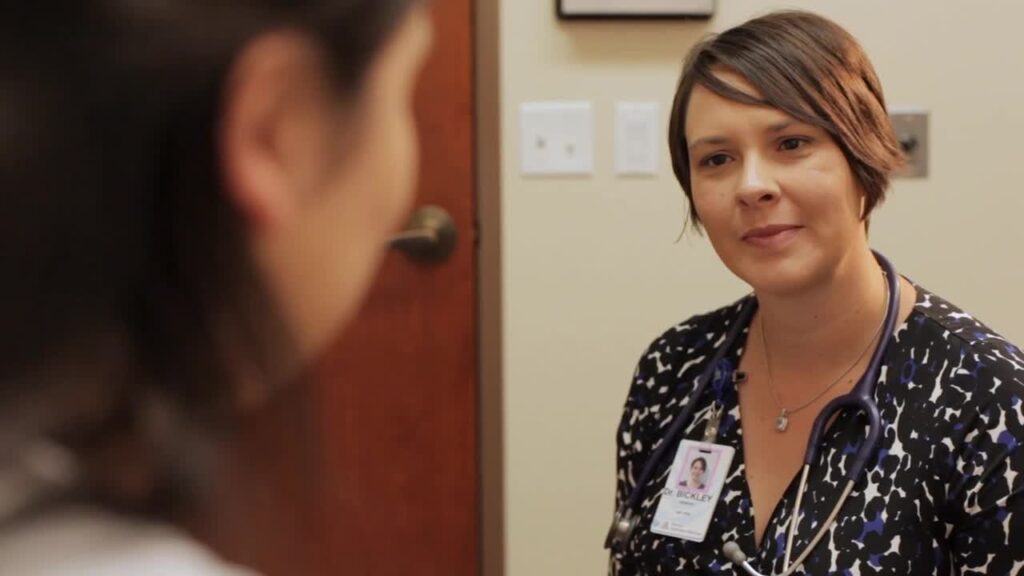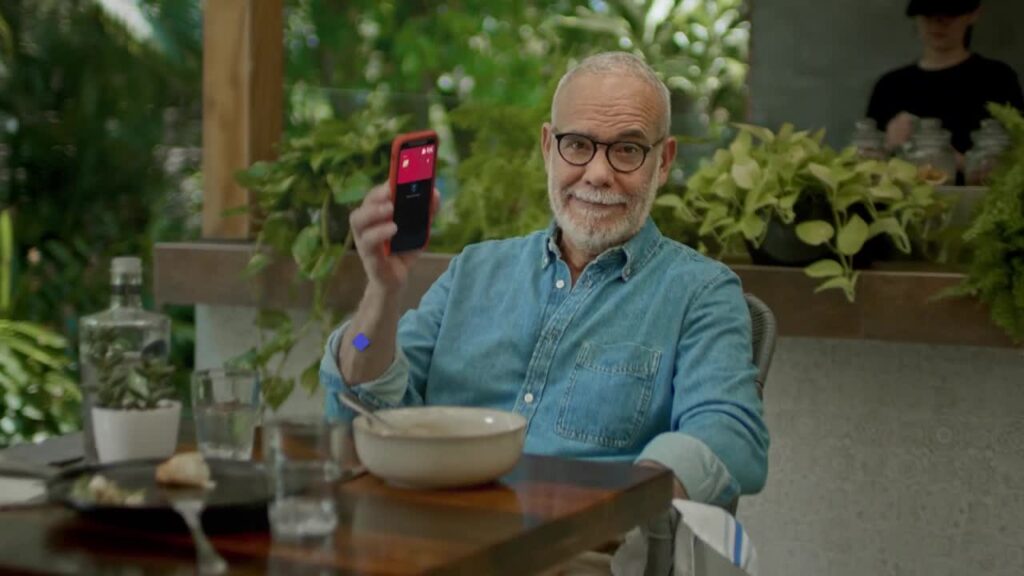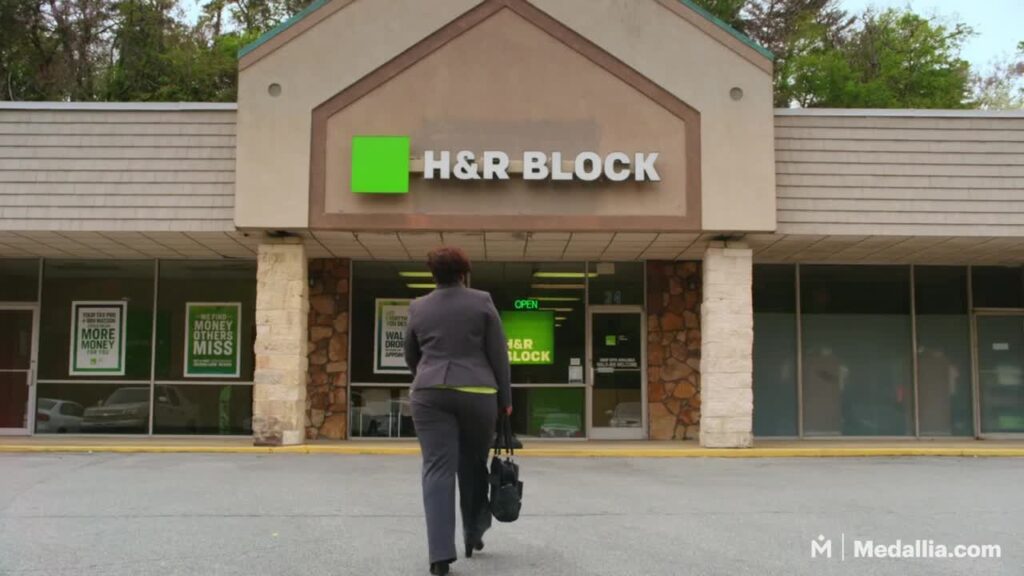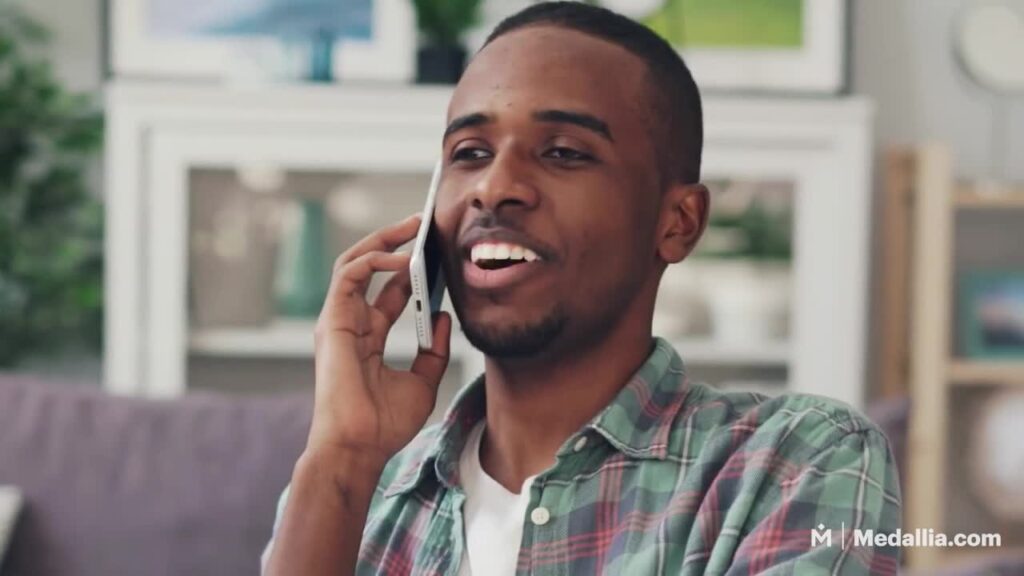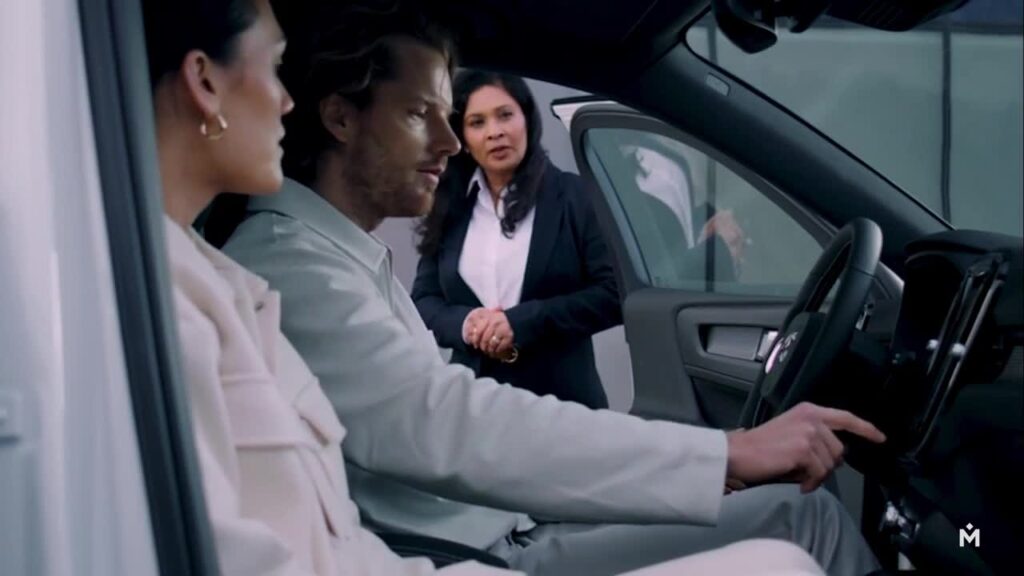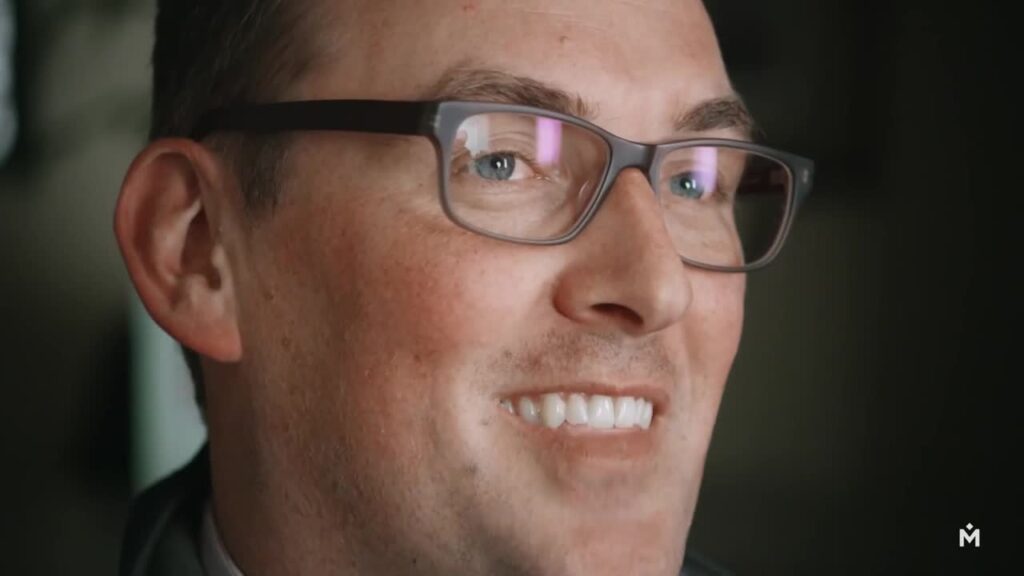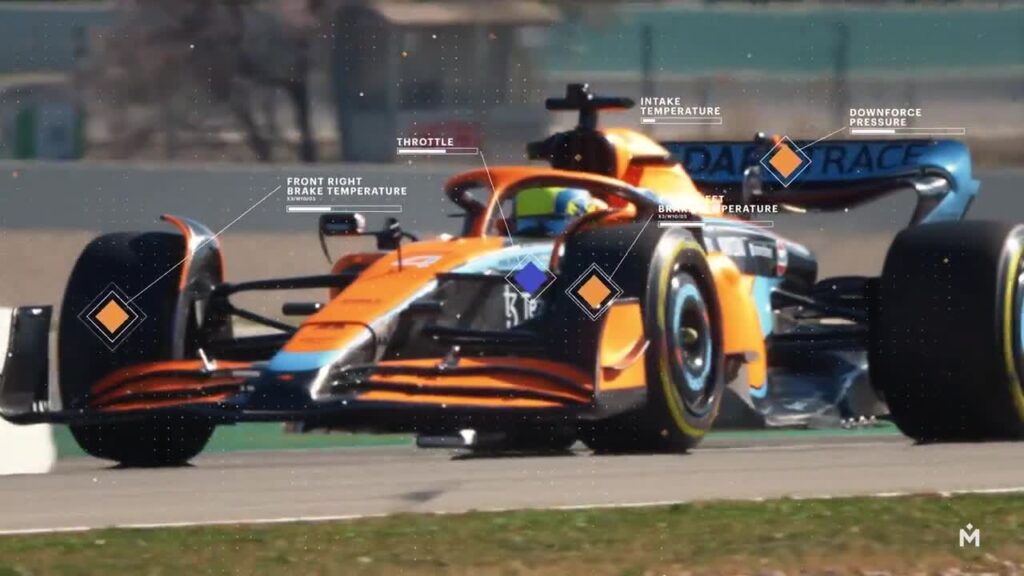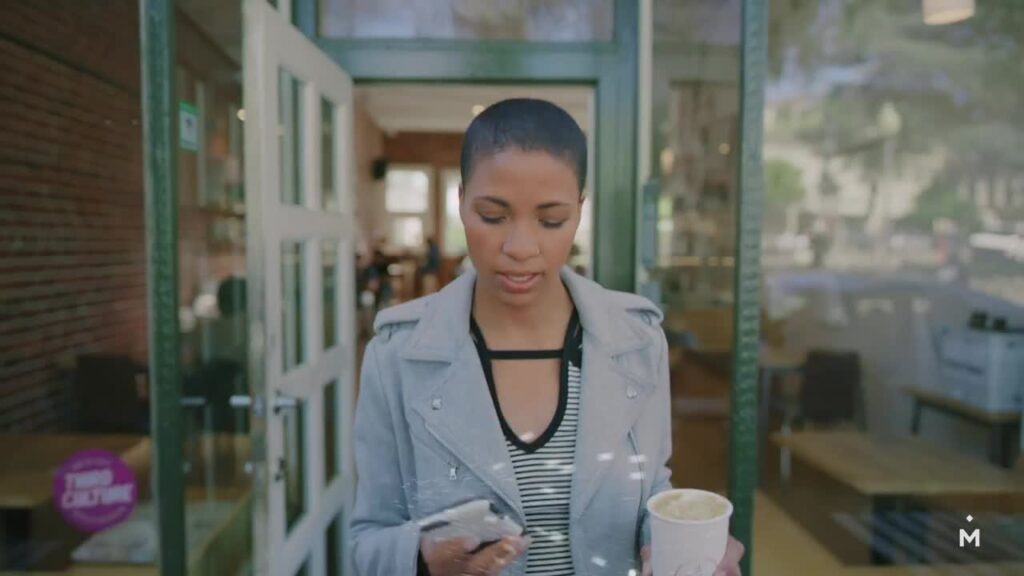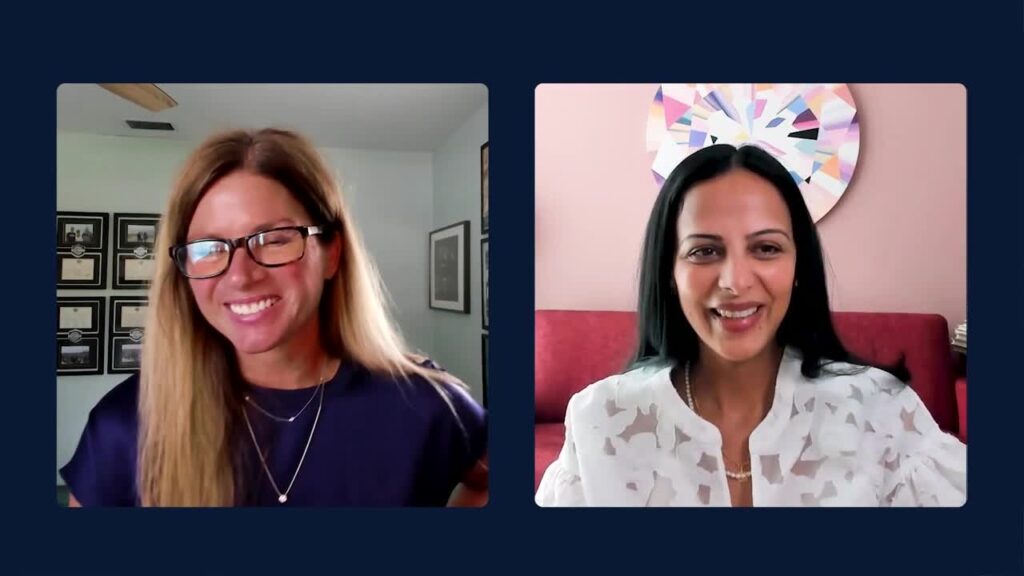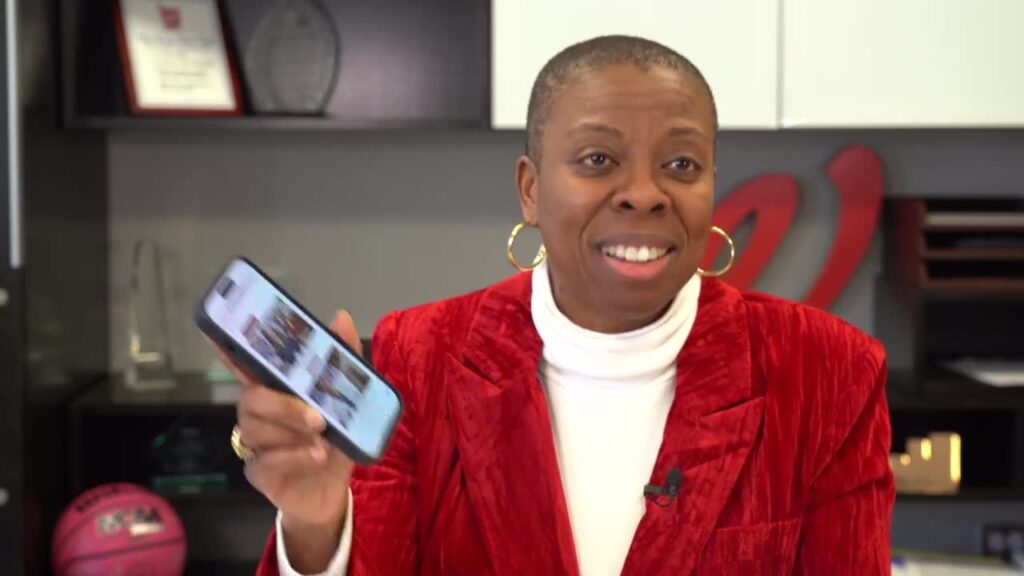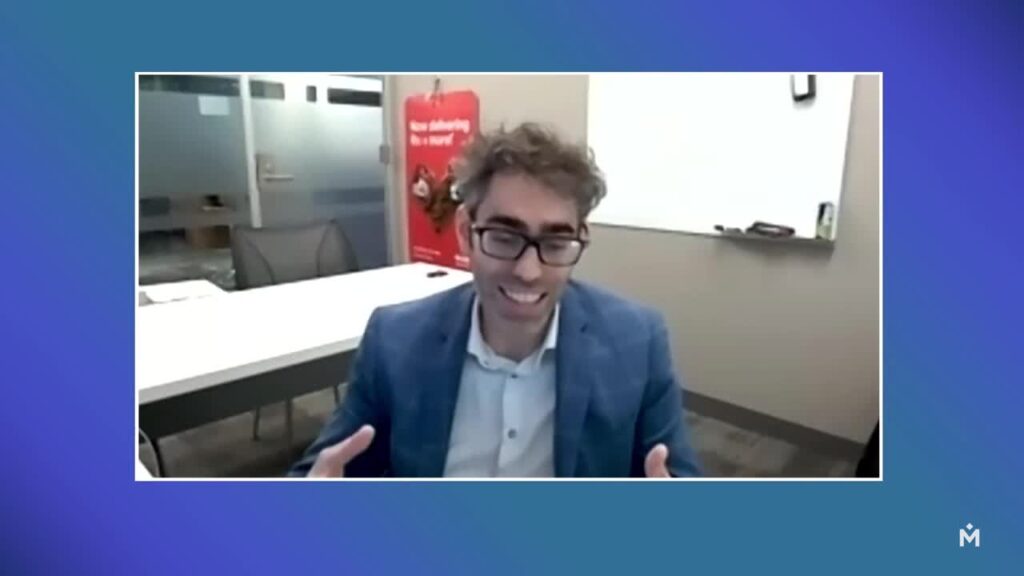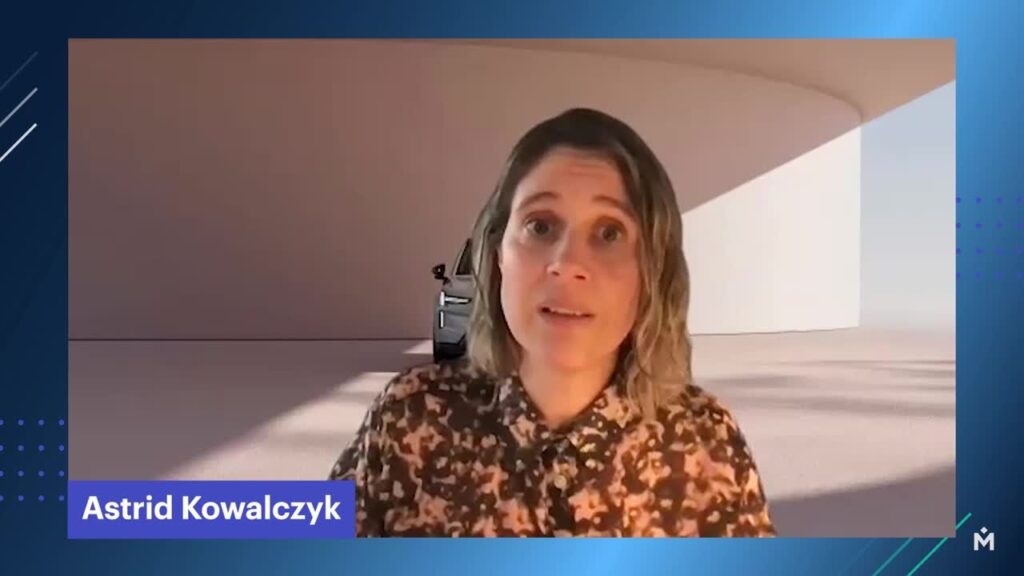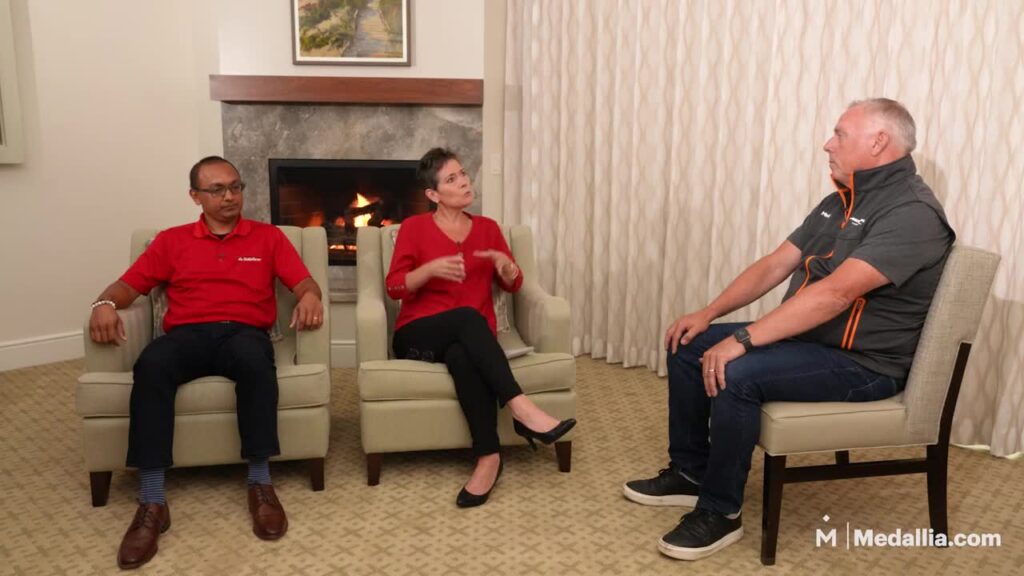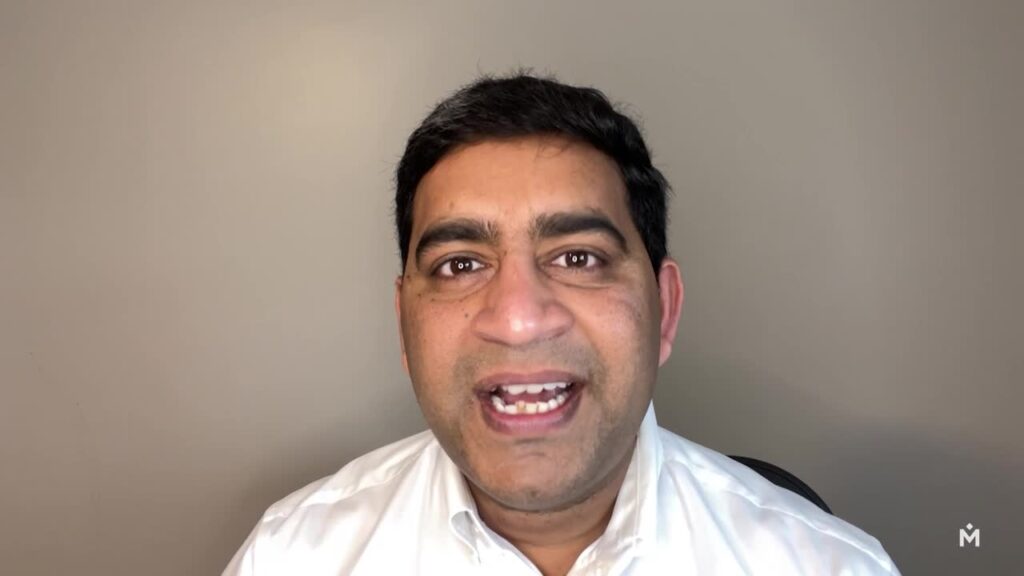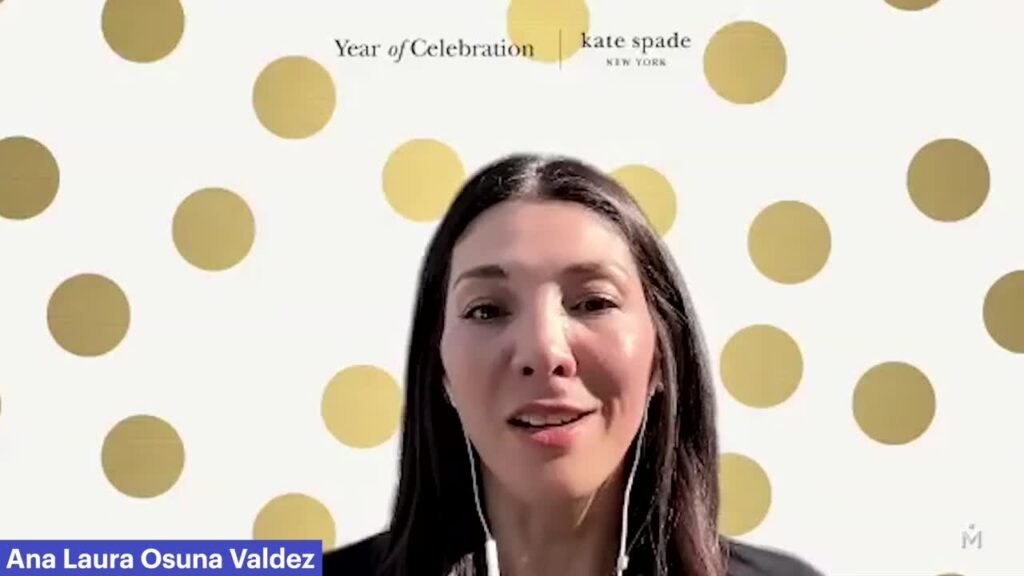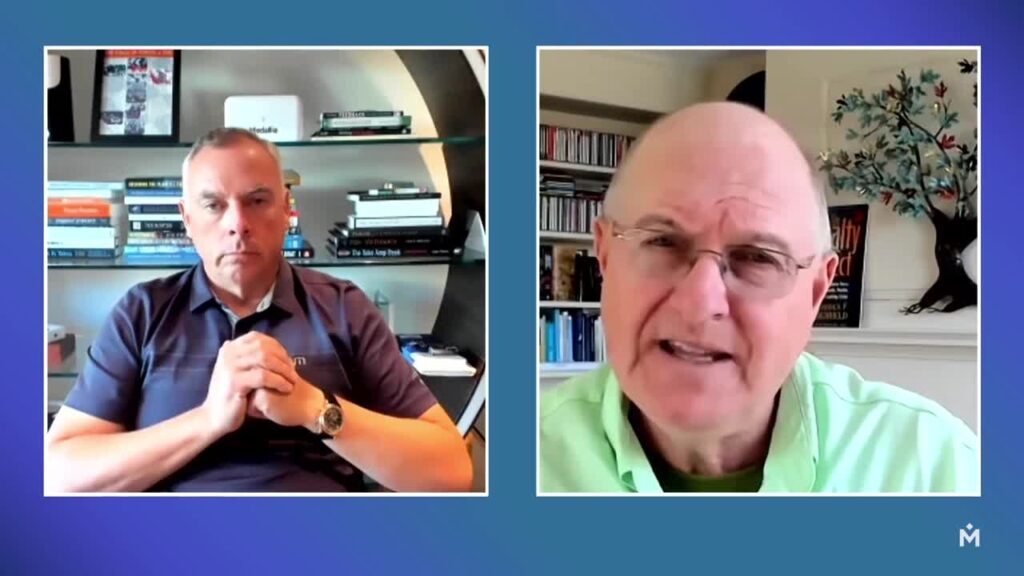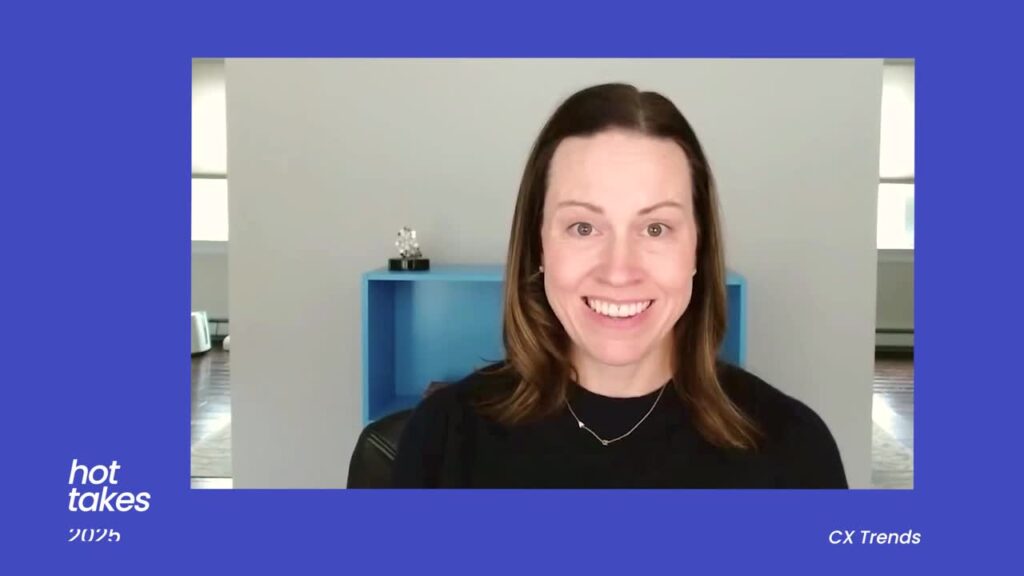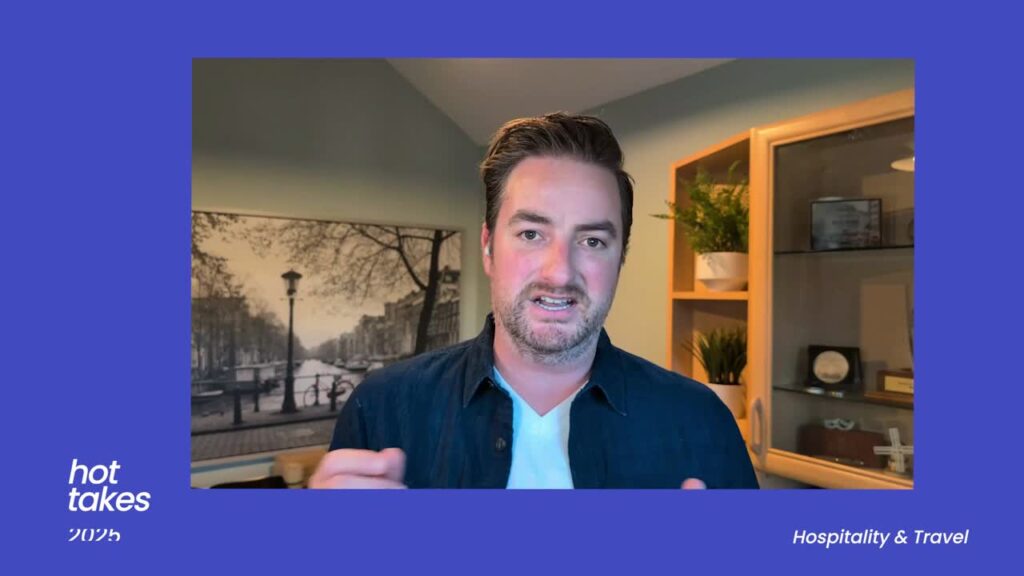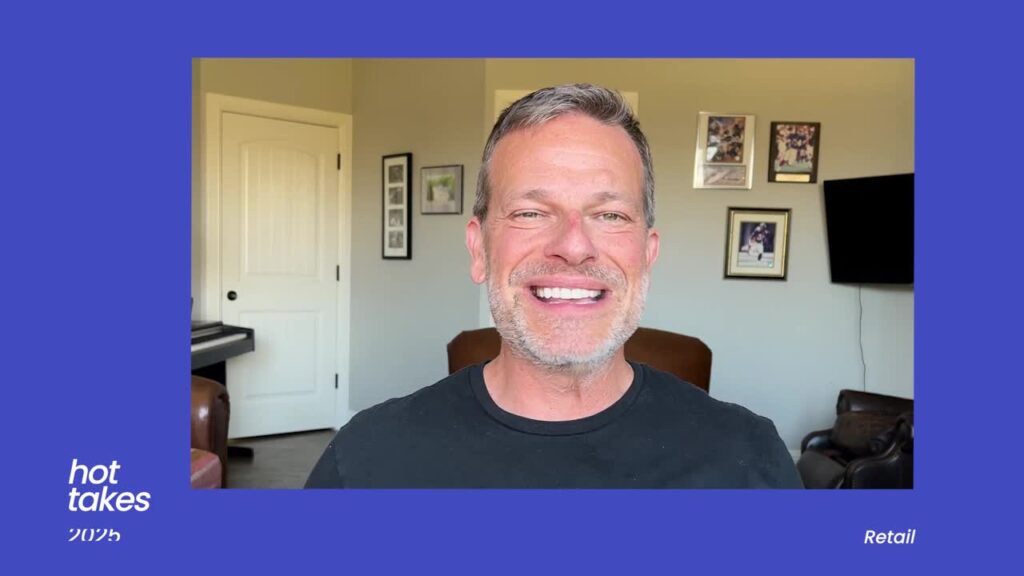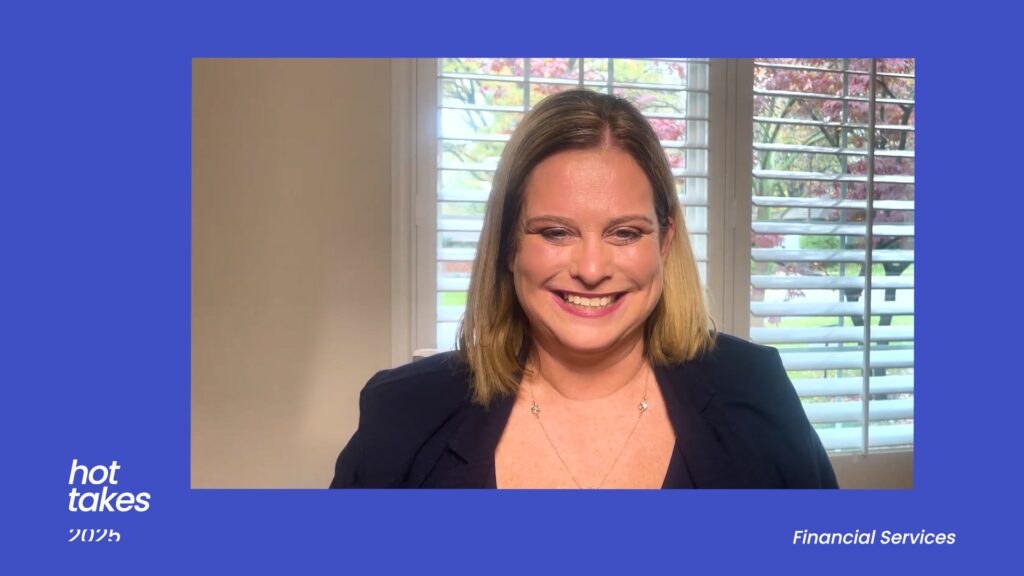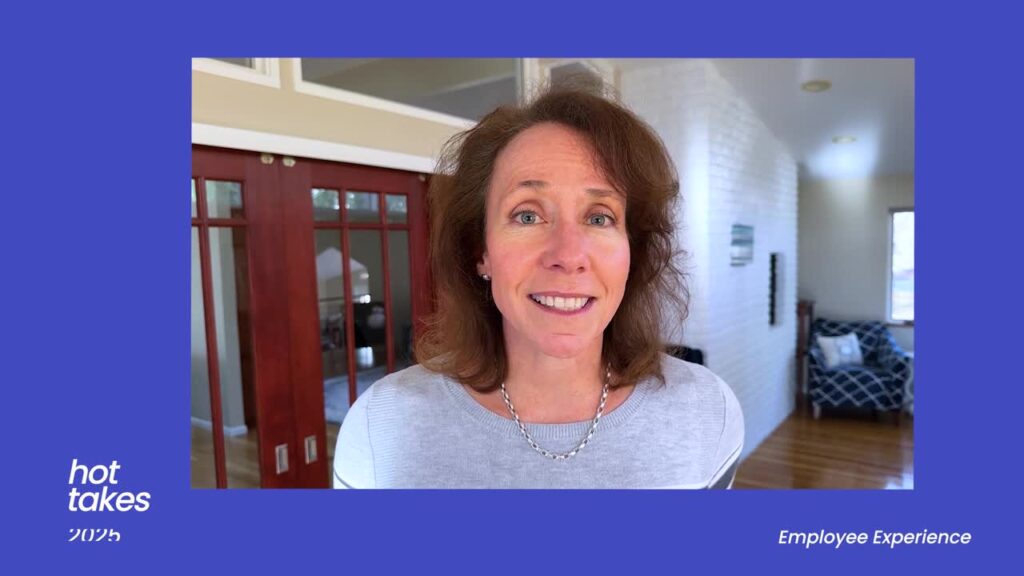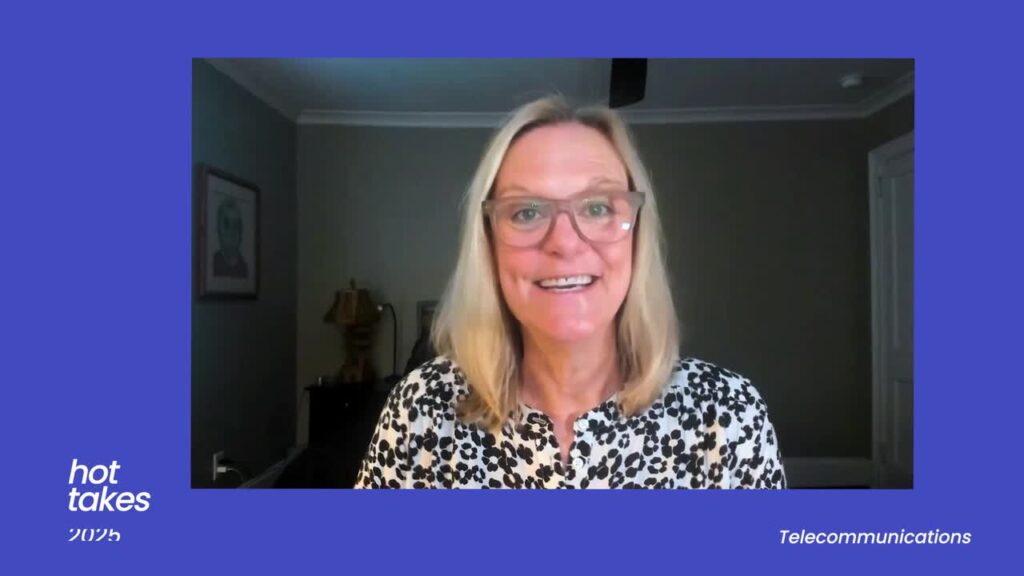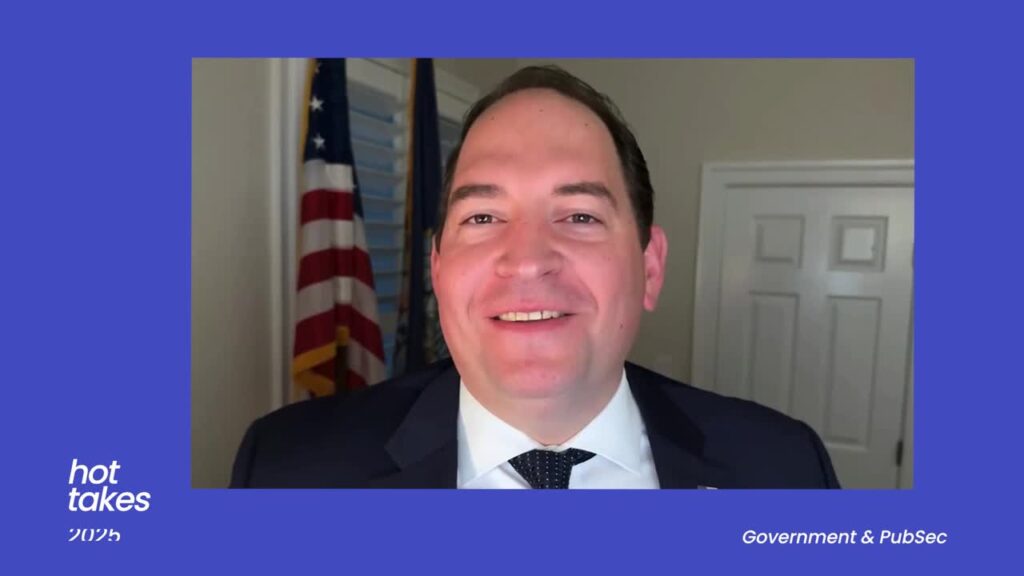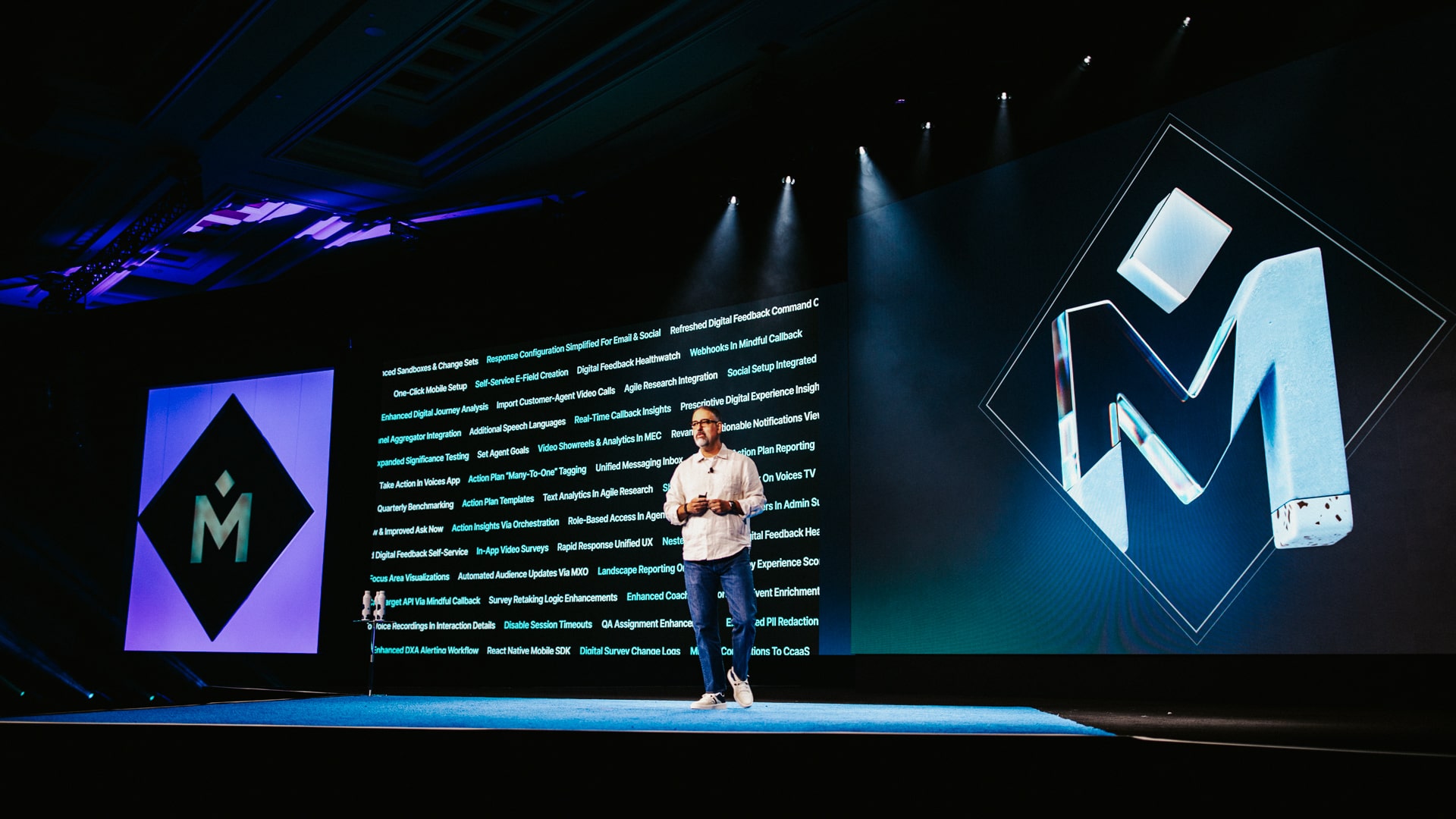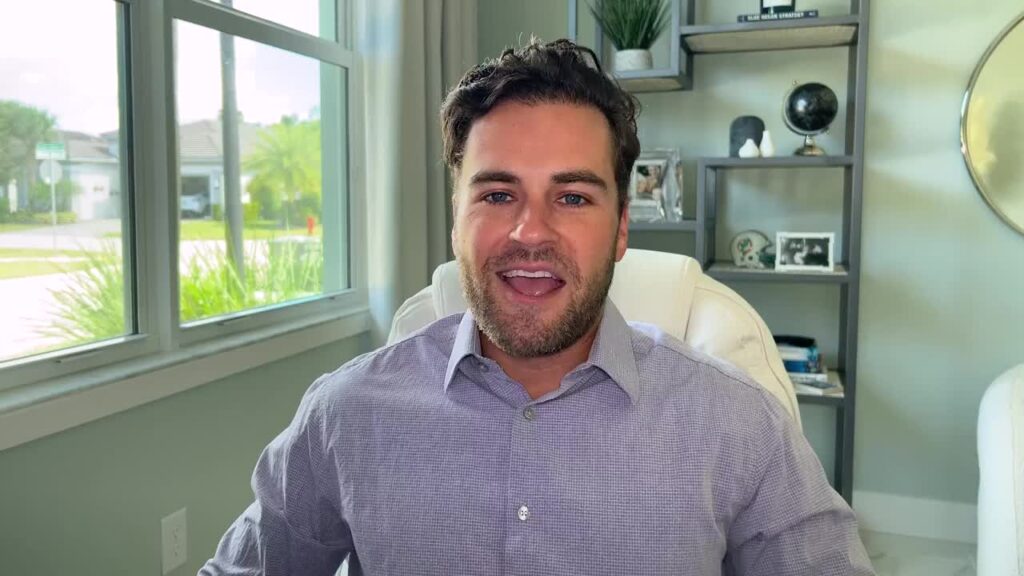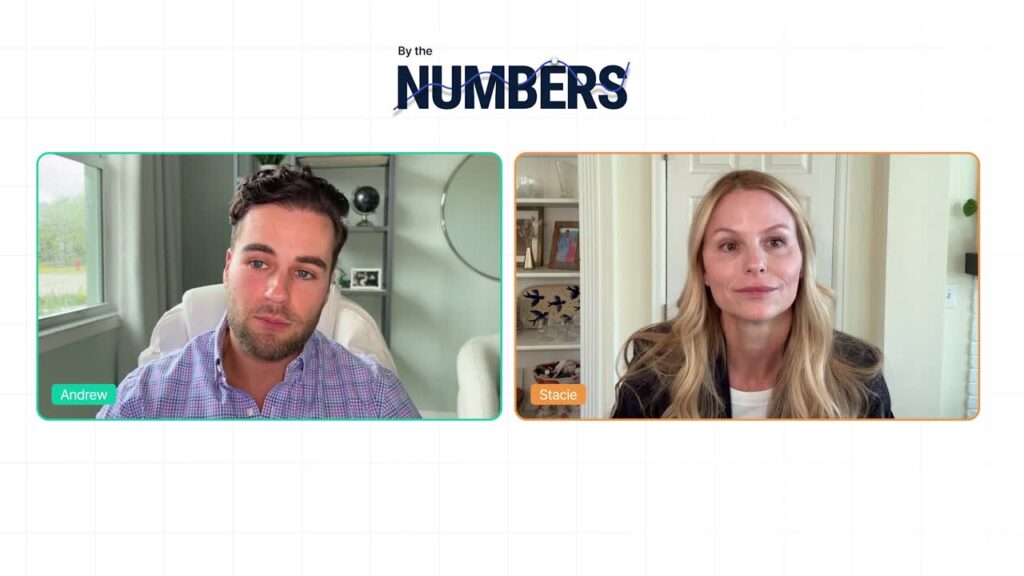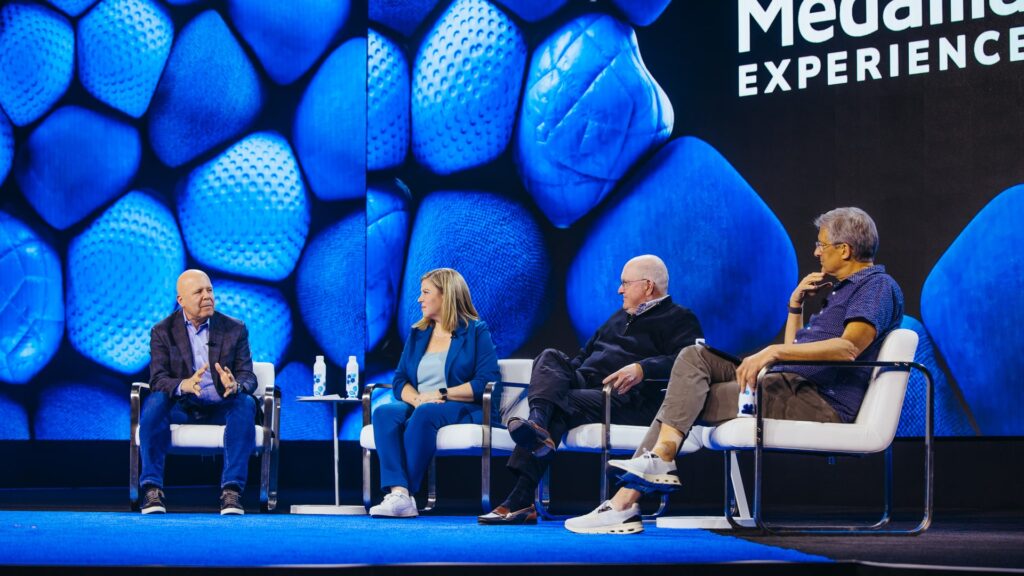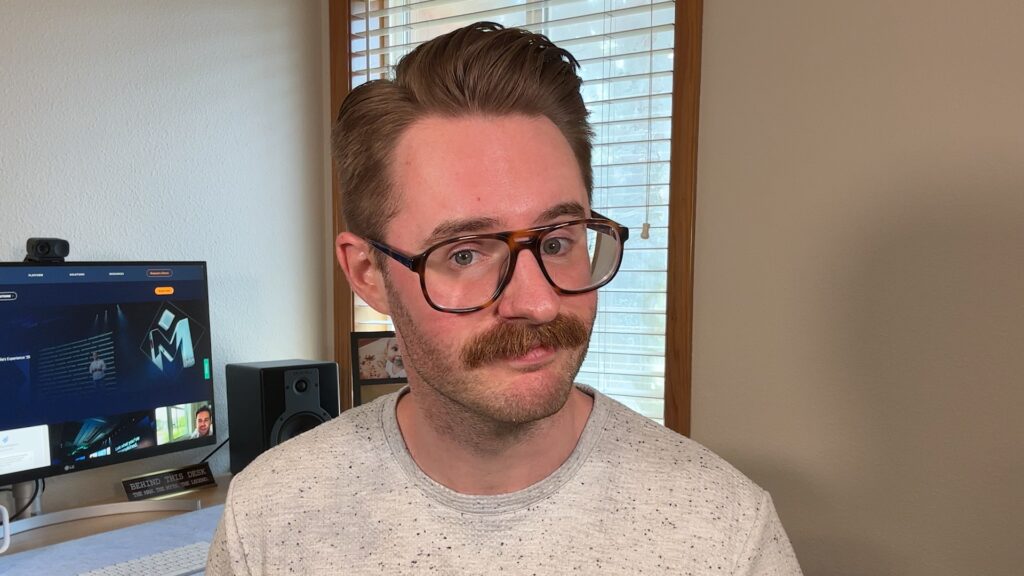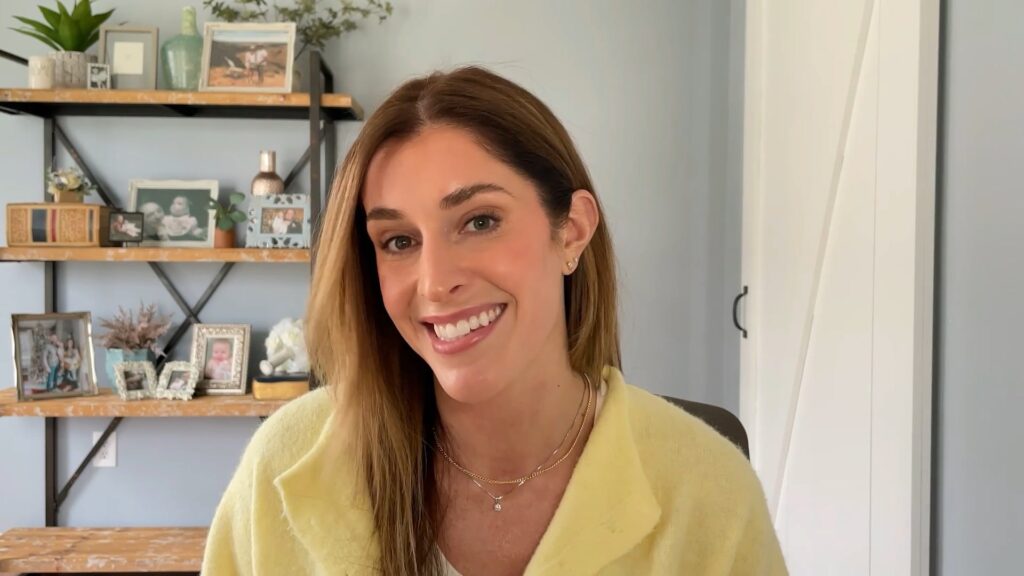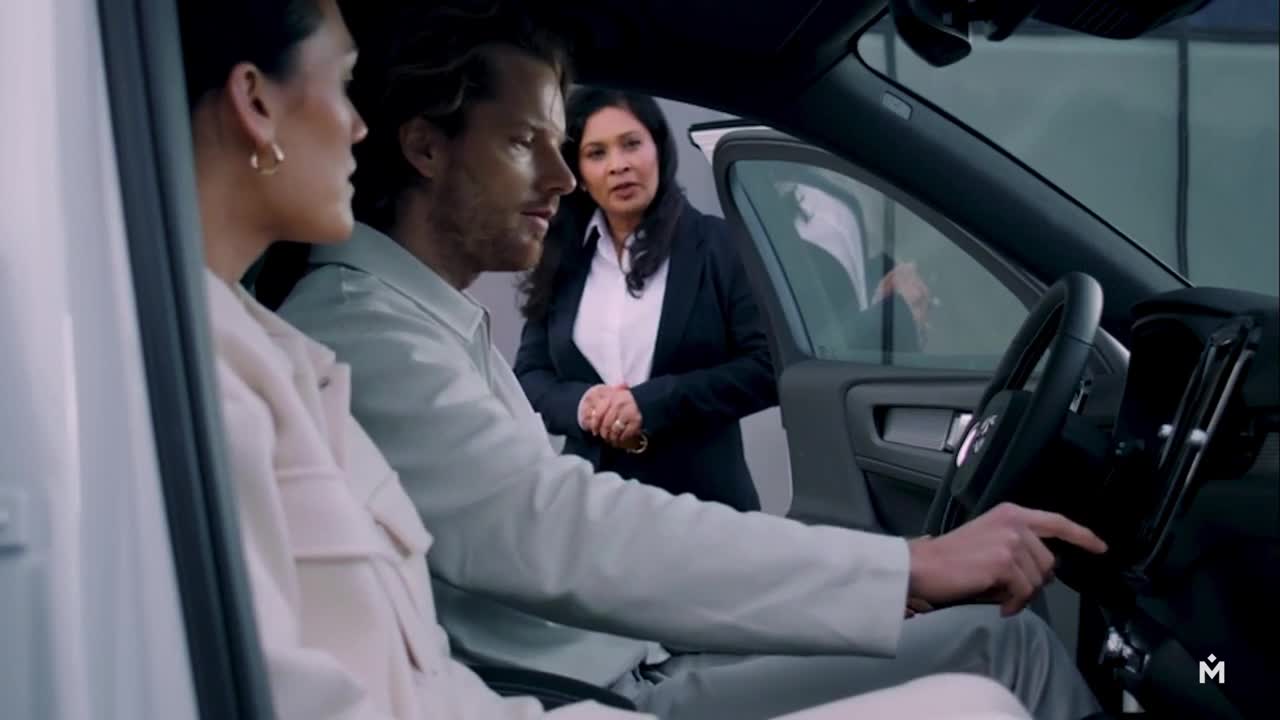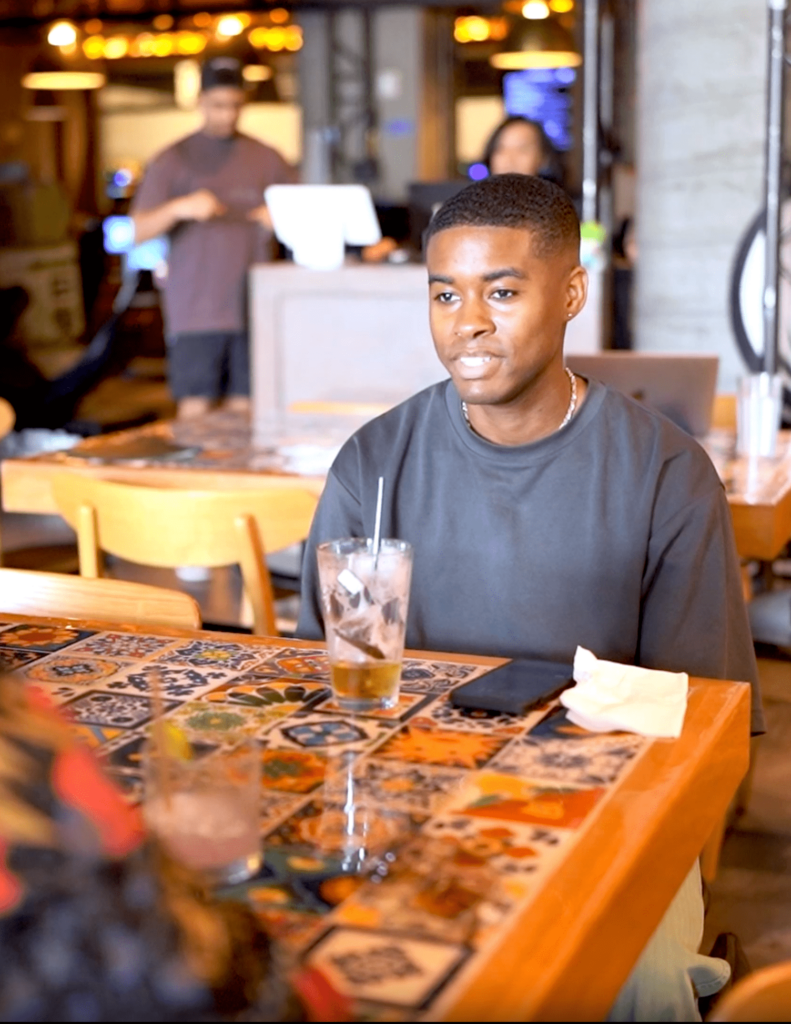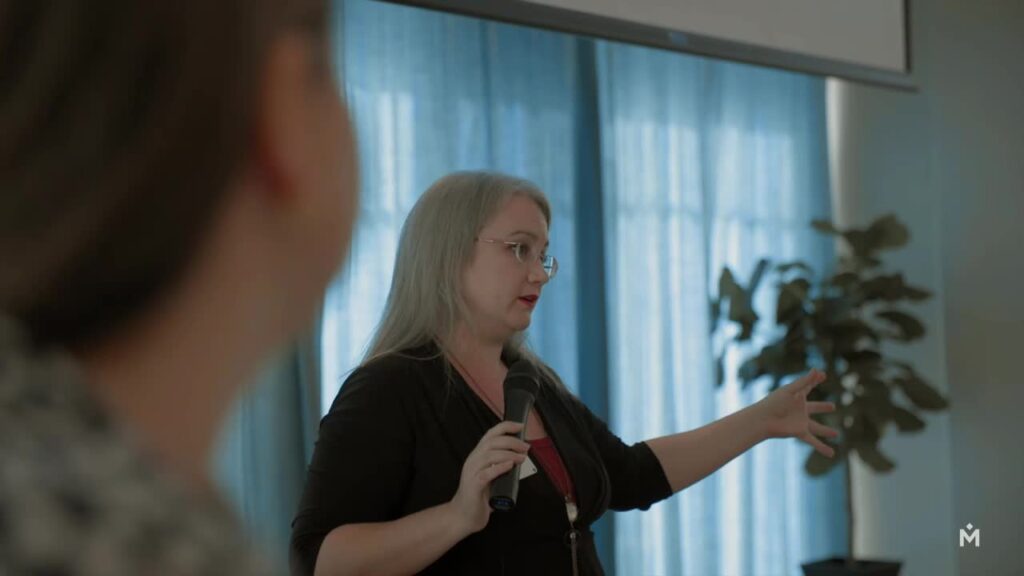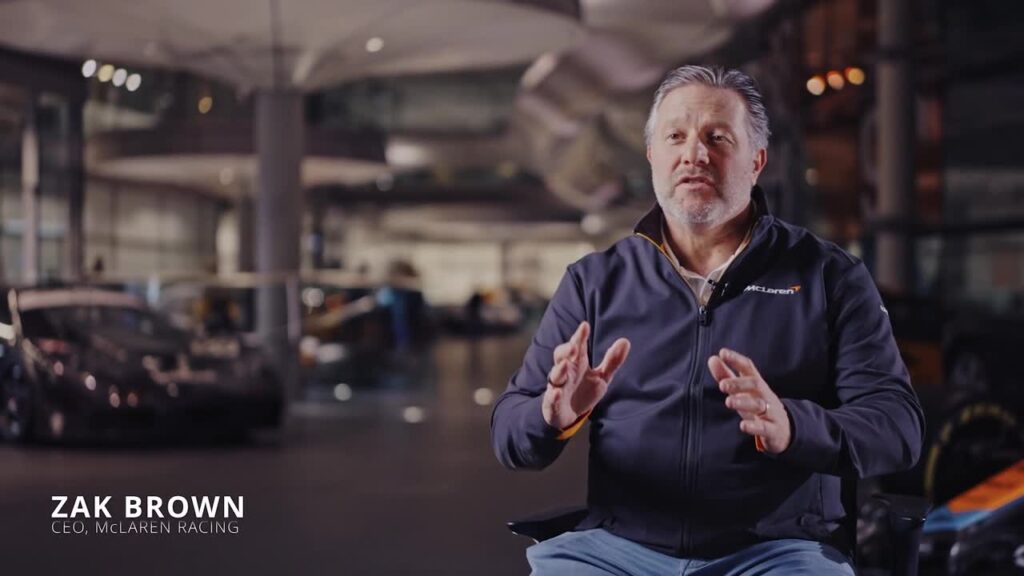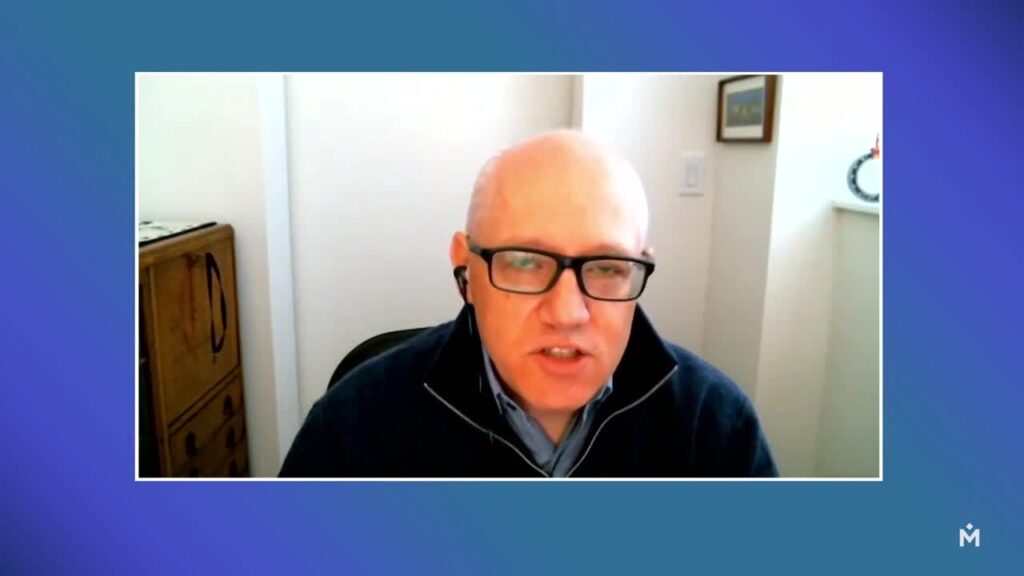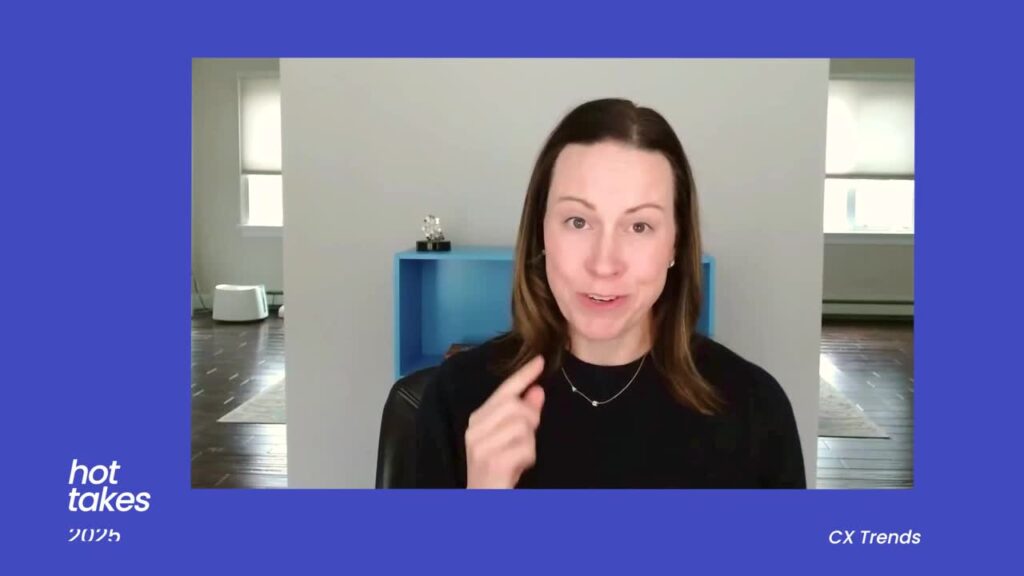Lee Becker: [00:00:00] We’re here to discuss the topic around trust. I know that trust in government right now, maybe a more of a difficult conversation, frankly, what’s been going on, but it’s still, I think, important from the context of really when we think about trust, not necessarily at the broad governmental level, but what does it mean frankly for what we can control.
So whatever the agency is, and you’re, we’re gonna hear some great examples on what. I love it. I’m so grateful for Martha, Wendy, and Sonya to be talking about, ’cause we’re gonna be talking about it from a perspective of Martha and we’ll go to instruction shortly talking about this from a broad governmental level.
Also, Martha’s, of course, expertise, experience building CX frankly, from the ground up multiple decades ago.
Martha Dorris: I’m not that old.
Lee Becker: So you’re not, but you’ve been a pioneer really helping us drive this work. Then Wendy from a, an agency level building out cx and what does that look like from federal student aid and Sonia from a [00:01:00] state level really being able to improve services at the DMV California MV, the largest DMV in this country.
So the fore further ado let’s quick introduction. I’ll start with Martha and Wendy and Sonya, if you could Martha, share a little bit about your background.
Martha Dorris: Martha Dorris. I retired from the federal government. A little over nine years ago, actually getting close to 10 years ago, where I worked at the General Services Administration and introduced the concept of customer experience to GSA and OMB and thought they thought I would had five heads and I was just speaking French or something, I don’t know, general Services Administration and the Office of Management and Budget.
And so we kept. My office that I worked in, the Office of Citizen Services, did customer service for years, and we ran the government’s portal, usa.gov, the contact center did a lot of the digital government work with the Office of Management and Budget. [00:02:00] And so we did direct service to the citizen, but we also did products and services that we provided to other agencies to help them deliver better service to their customers.
And so when I learned about the business discipline of customer experience. I felt like it was like the silver bullet, that I, and I just kept trying to absorb and learn as much as I could. And I, when I retired, that was my goal, is to bring it to the entire federal government. And so that’s what we’ve been working towards.
So I have a consulting company. I run the service to the Citizen Awards through the. Public Service Leadership Academy, and I have a podcast called the CX Tipping Point and a monthly newsletter. So if anybody’s interested, you can go on doris consulting.com and sign up. It’s got a lot of industry and government people who share, it’s primarily focused on the way the government has adapted customer experience principles.
And we’ve heard a lot around the conference this week about customer experience on the industry side and you’ll see we are. [00:03:00] Looking at it a little differently in the government, mostly outta necessity because delighting people in the government just doesn’t translate well.
Wendy Bhagat: My name is Wendy Bhagat.
We give out $120 billion of aid every year in loaned grants and work study funds. We have 40 million customers. And those customers are students, parents, and borrowers. And our relationship with our customers start when they’re 17 or 18, filling out this. Formal document, a government document probably for the first time to get federal aid.
And then we want to have a relationship with them all the way through to when they’ve successfully repaid their loans, which could be 20 years later. So we are managing customers that are have different age ranges and also just different experiences as well. To give you a similar story as Martha was talking about when I started at Federal Student Aid about 13 years ago, I was in a meeting with the top leadership there, and we [00:04:00] were talking about how to implement a new form based on new policy that was given to us by congress.
And I brought up the fact that we need to see, how will this be easy for our customers to read? How will they be able to understand what the policy is and why they need to fill out this form? And the response that I got back was, it doesn’t matter because we are the only people they can come to get aid.
And that’s where my journey began because I let them know that there are banks, there are organizations such as Sto Fi, where you can get. That aid to go to college and. That began my journey to shift the mindset in this entire organization to now when I left at the, on December 31st, at that point, we were at a point where any policy is, was given to us before you create a product, before you create anything around it.
My team was at the table with those individuals who are gonna implement that policy [00:05:00] and create the product or create however we were going to. Move forward with that policy. So it took over 10 years, but we were able to do it. So there has been progress made in the federal governments.
Lee Becker: Yeah. Amazing journey.
And that fun fact Federal student Aid is, I believe, are you, it was a total about $1.6 trillion of managing. So that’s a very large financial services institution. We’re
Wendy Bhagat: the largest lending institution in the us.
Lee Becker: Incredible.
Wendy Bhagat: Don’t realize that
Lee Becker: it’s amazing. And at. Argue that I would say pretty darn efficient.
If you think about, like you look at it from a banking perspective, you look at some of the banks around that number, they have 300,000 people. And you have a fraction of that.
Wendy Bhagat: Yep.
Lee Becker: To say the least. We, I think
Wendy Bhagat: we have about seven, 700 to 800 of the height of our. 800.
Sonia Huestis: So yeah, good afternoon everybody.
My name’s Sonia Huestis I’m the Deputy Director of Customer Services Division of the California DMV. About five years ago we were, in the news just pretty much [00:06:00] being kicked while we were down. I dunno if you heard about this little thing called Real id. And so people were literally passing out.
In line waiting to get into VDMV. During a hot day, we were handing out water that was something new. But fortunately, governor Newsom sent in a strike team and they came in and they interviewed everybody and they took a list of all the things that we needed to be able to serve our customers better. And it’s been an awesome journey so far.
One of those items was to implement a voice of the customer, and we’ve gone through major reorganization as well. And so I too had a similar experience where we were getting ready to publish something. I asked the question, is anybody gonna be able to understand this? That person didn’t talk to me for three months.
Oh my God. So it’s a different way of thinking, and it’s important that we start changing our mindset because at the end of the day, we provide service. And our customers just need their product. And our director has us really thinking like retail. Customers need their driver’s license, they need to renew their registration.
He jokes [00:07:00] at how hard we make it for people to pay us. We shouldn’t make it so hard. And so that’s, I’ve been part of that team and we’ve made a lot of progress and I’m happy to hear to share more about it during the session.
Lee Becker: Thank you so much. Thank you. An incredible progress that’s been made.
I’m just. Still amazed at a family in, in, in San Diego, and I’m proud to they share about how it’s improved. We’ve heard a number of folks that have come here from Cal. They were excited to see you because of the fact, great experience they wanted to share with you about it.
Martha is, I I know shared that you from a whole government approach, right? You’ve been working at this for a very long time. You’ve seen the evolution of CX and we’re going through this next phase. Can you share why this matters so deeply?
Why does CX matter so deeply, especially as we’re going through this movement around efficiency and how this drives the operational efficiency of across agencies?
Martha Dorris: Thank you, Lee. Great question. As we th we, the elephant in the room is the government’s just being torn apart, [00:08:00] right?
Plainly, you see it on the news and it’s probably worse than you see on the news if you’re not in d in the DC area. But citizens do deserve a government that is efficient, effective, and responsive, and customer experience has all of the. Tactics and strategies that can be used to create the kind of government that people want, need and expect.
And so I think when you are looking at, the pieces and the disciplines of it around being a customer or citizen centric government, we’ve talked about customer and citizen centric government for 20 years, but the customer experience work that’s been done has. Forced agencies, and especially at the federal level, the high impact service providers to identify who their customers are, to look at what they expect to do, regular check-ins and feedback on the experience that they’re having, and to get feedback on the experience that people are having and be [00:09:00] able to understand and identify the pain points that they’re having, allows you to invest your limited resources in areas that you know are gonna have the greatest impact.
To your customers? Just getting agencies to identify who their customers are has not been an easy thing. And it’s, there, there continues to be as more agencies adopt these principles. I don’t actually, it’s controversial, but I don’t even, I try not to even use the terms CX at the federal level, especially with new people.
We have lots of new appointees coming in who think about customer experience from a commercial standpoint. They think about it from. When they were, getting their coffee at Starbucks or they were going into the Ritz Carlton and they had Diet Cokes in their refrigerator and they go to Nordstrom’s and people are taking care of them.
But that’s not how it is. What is driving people in the government. It’s about, I. This efficient and effective service? Do they get what they need when they need it anytime, anywhere, on any device, and they [00:10:00] are able to accomplish the problem or solve the problem that they have and move on?
They don’t really, there’s not many people who just call government contact centers because they just need somebody to talk to. It’s not that they don’t but when they pick up the phone to call, they wanna get their answer and they wanna move on. There’s a lot of things that. Are being under this umbrella around digital first, but not digital only.
And we know that’s the least expensive channel. So helping agencies to understand what people, what matters to, to your customers, which is done through all of these customer experience strategies. I could probably go on, but I’ll. I’ll let you I’ll hand it back to you.
Lee Becker: Thank you. No, thank you Martha.
And the it, thank you. So very much. Put the context of just overall from the federal side, federal government side, we have great examples from agencies where one of them is feral suning. You’ll have the journey. You already talked, you talked about how you started off with that tough conversations early on, when you first got there.
And look where federal state has made tremendous [00:11:00] progress as a result. You shared a little bit more about that in the middle time. You talk about how ’cause again you’re operating as a bang, right? As a large lending, and so you’re looking at CX from an efficiency standpoint.
Can you share a little bit more about that?
Wendy Bhagat: Sure. I will share through an example, so this crazy thing called covid happened, right where we all went home on, I still remember a Friday, December, sorry, not December, Friday, March 13th. Ironically, it was a Friday the 13th, where everything shut down.
We, I got a call from my boss saying, watch the news. Turn it on right now. Because they were basically shutting everything down, but also saying that they were pausing federal loan payments, student loan payments. And I was like, oh my gosh, how are we supposed to do this? 20 million loan borrowers, we have to tell them they don’t have to pay anymore.
The. Great news for them, but how do we communicate that? Luckily, we had just started, we had just launched an email system that, that we owned as opposed to our servicers, so we were able to get a message out to them quickly. Fast [00:12:00] forward three and a half years later, we have to get them out of that payment clause.
These are people who have graduated from college during this time, never started repaying their loans. Have gotten, a new car have created their budget just as any responsible person should do. But they didn’t even think about the student loans because why would you? It’s been on pause or it’s those people who have, had been paying regularly, but they’ve forgotten about it, so that’s not budgeted for them anymore.
Or individuals who are delinquent before for paying their loans, but now they’re all starting fresh in three and a half years, which is a great thing for them. How do we communicate them? How do we get them ready for this? So the first thing is, in order to build trust, I believe you have to actually engage with your customers.
And that’s what we did. Like we’ve created our plan here. So we have this great plan, our, multi-channel communication strategy, but let’s actually go to our customers and test it out. And so we [00:13:00] went to our customers and talked to them about it. Those recently graduated folks, the people that had been in defaults, the people who had been paying on a regular basis too, and just confirmed what we were doing.
Is this the right, is this the right cadence? You wanna hear from us? Is this the right. Channel you wanna hear from us, is this the message you want? And they confirmed what we were thinking. They actually wanted direct steps, tell me what to do three months out, tell me what to do, two months out and on.
And it was, it ran beautifully because we built trust with them in the beginning. And that then created efficiencies because once they came back into repayment, we were actually at a better rate with regard to repayment than we were prior to the pandemic. Because we had listened to them and we had created a system where they could give us feedback as well.
They were able to give us feedback through every email we sent. Through our partnership with Medallia, we were able to listen to them via social media and. [00:14:00] Answer their questions on social media. So we had a mechanism in place, but that trust that the time we took in the beginning to build, rebuild that trust with them.
Helped us at the end, and I don’t know how familiar you all are. You may be with audits that happen in the federal government. We have the GAO audits. Everything every agency does, I assume there’s a state level. We had a GAO audit done of our communications and our plan to bring people back into repayment.
They looked at all of our contents, they saw all the emails, all the communications we did, had multiple interviews with me and my team. And they came back with a report that had no findings, had no recommendations, and that’s rare. And the federal government, that was like a mic drop moment for the whole team.
They’re nodding because they’ve been through this. It was just, it was stunning to be, 10 plus years ago, we have no competitors to being in a place where, you know the people that [00:15:00] will complain about us the most said there’s nothing you need to do differently. So that’s our story about building the trust, which ultimately built the efficiencies.
Lee Becker: So something for you, millions of customers that you interact with every single day, that your teams, across all the offices that do, what are some a tangible impact that you’ve seen? From really implementing CX and operationalizing it.
Sonia Huestis: Yeah. For us it was new. It wasn’t even part of our strategic plan until our new leadership came in into office and I think one of the first things our director did was get us the tools we needed to finally go on our way, help us on that journey.
He would ask, why are people calling? Because there was a lot of anecdotal, everybody knew the answer, but it was all anecdotal, right? I was like, no, I want the data. It got to the point where you couldn’t tell ’em anything unless you had data to support your opinion about something. I. So he would ask the team, why are people calling?
And my team came back and said, they’re calling because they want an appointment. And he’d like, wrong, nobody wants to go hang out at the DMV. Like, why [00:16:00] are they wanting an appointment? So we kept digging and now I can tell you 9% of our customers are calling because they’re, they need to renew their registration.
And then I can break down that 9% into 40% of those customer Ali, because they can’t renew online. Okay why can’t they renew online? So we kept digging and digging. We also hurt some people’s feeling, right? We were like, the website doesn’t work. And when you said that to the website, ki it doesn’t necessarily go over well.
You feel like you’re telling ’em their baby’s ugly, something rude. They take it very personal, and at the end of the day, the director would remind them all. I was just the messenger. Don’t shoot the messenger. Jefferson, my colleague here helped stand up our CX council. We realized we really needed to partner with other folks across the divisions because we needed help from the folks on the website.
We needed policy change from our policy team members, we have representation on the CX Council and we basically identified those top three pain points, or I think we’re gonna go big, we’re gonna go five because we were hearing five yesterday during the keynote. But you gotta start somewhere. You don’t want the list to be too long.
[00:17:00] And so now we know what we need to fix and we’ve made some fixes and we can monitor the change that we’re making of the result so more people can renew online. And then we’re continuing to in improve in the what’s next and the what’s next. And it’s just goes from there.
Lee Becker: It’s incredible to hear how, so oftentimes we’re in prior con prior conversation, we’re talking about how DOD was looking at CX as a, as driving, making decisions.
And I love how you highlight that example and then bringing in the council that you talked about bringing in, because that’s a critical piece because you need to have all the folks involved that are able to actually now start driving that change is that’s needed. So that’s wonderful that you’re able to jot Jack soon.
Well done. Okay, so we’ve talked about some of this and I know we’ve been hearing a thing about omnichannel, right? And you’ve talked, I know Wendy you mentioned social, you mentioned email. There’s multiple channels, calls. We’re hearing the contact center. Can you talk about, what is, what does an effective omnichannel strategy look like and how, and a federal student aid has really, leaned [00:18:00] into this, whether from a digital standpoint, contact center, social, what would, what does that look like and how it drives efficiency and trust?
So I
Wendy Bhagat: think for us it starts with I think when you think of multichannel omnichannel, you think of, I know sitting here today and listening to sessions, it’s very much around the feedback around that. I think there’s one step before that, which is creating the communications and the engagement strategy first, and making sure that’s aligned across the channels.
And for us, we always start with. Website student aid.gov. That has to be up to date first. And so you do that and then from there you spin off the emails, the text, the social media, make sure the call center representatives have the information that they need just on the policy that we may be sharing, but also for them to be aware that’s an, there’s an email that’s being sent to 5 million people.
Here’s the text of the email so that then you’re prepared to handle this so you’re not caught off guard When someone starts talking about some email and they’re [00:19:00] like, what are you talking about? So having those pieces in place are critical for us. Once you, so we have all that in place. We launch a campaign and then we start getting the feedback either from surveys, from our emails, or things on our website as well. Was this page useful or not useful? Or if someone went through a tool on our website, there’s a survey at the end and you bring all those together to get the voice of the customer. So those are those dig. So those are mostly the digital pieces. In addition to that, we also have.
Ombudsman where someone can come and complain ultimately about what may be going right or wrong. So we also bring that into the mix too. And so we’ve been doing voice of the customer on a very regular basis for maybe the last seven, eight years, and getting that information and then being able to make improvements on the very consistent basis.
We’re all, we’re continuously improving based on that feedback that we get, which ultimately helps with the trust and also the. I have to say it’s not the [00:20:00] delight because most people aren’t being delighted, but at least they’re happy and satisfied with their experience with us. So it’s the data that we’re getting back through the tools that we have through Medallia, but then also through things like heat maps and other things to see, okay, are people getting stuck in certain places on our website as well?
So we’re trying to put it all together on a regular basis. Now we’re doing actually I think it’s the, I think FSA is the very first. Office within the federal government that’s using Medal Dahlia speech to be able to cast everything together and then look at that data to then see, okay, where are their pain points based on a certain subject, whether it’s a repayment options or it’s fafsa.
So you’re pulling in data through surveys, complaints, and the CSR chat. So everything’s coming together, so we’re co consist constantly trying to improve the experience.
Lee Becker: So I know USDA as well and HUD and others are looking at doing this too, which is great. It’s great to see the Burl government starting this, [00:21:00] and I know and sign from your standpoint, you’re looking at omnichannel as well.
Sonia Huestis: When we five years ago, we were pretty much voicemail and in person, right? And in person being very expensive channel. And then as a result, some of the strike team efforts, one of the asks that we had was, can we one, we needed a CRM desperately because we had no idea who was, what channel you came through.
But we had no history call history. It was a horrible customer experience. So we asked for no, just live chat and CRM, we weren’t trying to be greedy. So today we we have live chat, we have chat bot. We’re monitoring social media, everything. Voice is run through our CRM. We’re not free 60 yet, but we will be in the next year or two.
I think we’re everything but mail and field office, which those are large channels, but you have to start somewhere and it’s too hard most of the time to do the Big Bang. We’ll take what we can get right? Some information is better than none especially when we also have a customer care team that handles all of those escalations, right?
Where people get so frustrated, they’re emailing the director, or they’re emailing our governor directly. Obviously those [00:22:00] folks, we wanna make sure that we resolve those issues and then look at the. The why that they’re calling and what can we do to resolve it. So yeah we’ve come a long way and all of those service channels, even the ones that are a tech connected to our crm, like the field office, and you send out SMS or email surveys to get feedback.
So we do send email survey to every single customer at every single touch point just because we want to get that customer feedback continuously so we can continuously improve.
Lee Becker: That’s outstanding and. Martha, we’ve talked a lot about, so on channel, right? So there’s this whole MO movement, and we’re seeing this, government is looking to modernize, right?
We know this. Why is it important? Like why is it important to do this? When you talk about, the GL situation, right? But why is it important for us to be able to really connect the dots across all from the omnichannel standpoint, across all these pockets of excellence?
Martha Dorris: We have a whole new leadership cadre coming in.
And getting people. And we’ve done this over and over again. So I’ve been through several administration changes. [00:23:00] We have new leadership changes and just to understand why customer experience and improving the services that you deliver to your customers are important and what are the benefits of it.
And to me that’s like the first step. The second step is how do you make decisions? How can you make decisions if you have no data to make decisions on? So I think getting. Feedback. And I worry people who add offices overlooking them all and thought that us a.gov the great wonderful because we built it, but you cannot make decisions without getting the feedback from customers so that you can really know what they’re facing, what their issues are.
So that was one of the first things that we did was we created a survey at the time this was 15 years ago. And we went out and I had created my own customer experience index. And so they got a score of 52. They were in shock. And that was what really turned them around to knowing why did [00:24:00] they get a score of 52?
And I think, so to me, the bottom line is, and getting this omnichannel feedback and really getting people from the outside to your customers to give you that feedback, gives you the answers that you need to be able to. Do strategy and better prioritize your resources
Sonia Huestis: in addition to the top threes ISG earlier.
One of the other things I’ve found with, in addition to the customer was our agents weren’t necessarily empowered to do the job. We hired up the so we kicked off an empowerment campaign and that basically, and, upskilled them for one, we realized we also needed some higher classification.
So it created, and I a little bit here, but it created a formability for them too. So those were some of the bigger takeaways. ’cause some of our old policies didn’t make sense anymore, and so our agent wasn’t necessarily able to resolve the customer’s issue. So through some of the Fidelity surveys where we could see where we’re not resolving the customer’s issue, we look at the why.
So that was one of the items too. And then the Detr data, [00:25:00] right? What is it that was sideways or what wrong? And then we’re also in the middle of the modernization. So I think the good news is what we can’t necessarily do right now. We can roadmap for later. The baby’s ugly. Everybody hates our chatbot.
Everybody and our spores are super low. I will say really good at, giving you, getting you to the right the age of our website, but that’s it. But the good news is we have a roadmap hide us, right? Two saints from our chart data. One, they want it to be conversational, and then some companies are doing it right?
So now there’s an expectation that I could talk to you about and about. They also wanted information about their stuff. Where’s my driver’s license? Or how do I renew my registration? Ashley, just yesterday I was talking to somebody at a table. She has motorbikes and she was having some problems, right?
So we have to make it easier and thankfully because of that data, we’re able to build that in. We’re building out specialty bots dow that will tell a customer now whether or not their driver’s license is in the mail. Baby is stuck in some [00:26:00] one of our 5,000 exception processes. In which case that customer could now create a case 24 7 and then will respond same day, next day.
So we’re also trying to make an effort to get to those customers free to talk to us and make it easier for them as well.
Martha Dorris: Bringing the data together, the owners of different pieces of data and looking at how the data impacts. Different parts of your organization. The parts of the me Jewel is it sends the insights directly to the person who needs to take action.
So you need a performance management system that allows people to monitor progress that’s made based on the insights that you get. We didn’t, you didn’t mention earlier that I, a point that I wanted to make, which was about the real time aspects and the importance of real time feedback because.
It allows you to make corrective actions immediately as opposed to waiting until something’s gonna escalate. Get bigger, get outta control before you find out that it’s even a problem. And I think you, it’s draw, it’s [00:27:00] integrated in the strategy that you have, leadership that you have, and having people pay attention to the data, making sure that you’re managing the performance.
I don’t know if any of you or your children have filled out the fafsa. Every sub, each. That was not a really good rollout. So last year we had, it was a reputational hit more than we never, ever had, and we had a lot of fixing to do. Let’s beca with our customers. Let’s be transparent with our partners, the schools, and then out there working with us at this.
We launched, met we watched betas. And with those betas, it wasn’t just us working on a silo, those betas involved us reaching out to our customers, folding a mets that were in person for the first two rounds, betas, and then publishing hub cookie. What we found that all the issues we found and how we what to fix that.
So while we were doing his in-person cinemas, we were actually testing for. We were actually putting information [00:28:00] up on social media to say, we know that there’s this issue and here’s a workaround for you while we fix it. We were putting that same information up on our website, which is everything always goes up on the website first to say, we know this is enough.
Shoot, here’s your workaround. So we’re actually sharing information with art. We, we don’t have our sheet figure out yet. Similar to that you were sending emails out to people that, one example is people who had started the forum but did not finish and then they could have survey data saying you are just emailing each far too much and so are, so you, I, it was huge.
